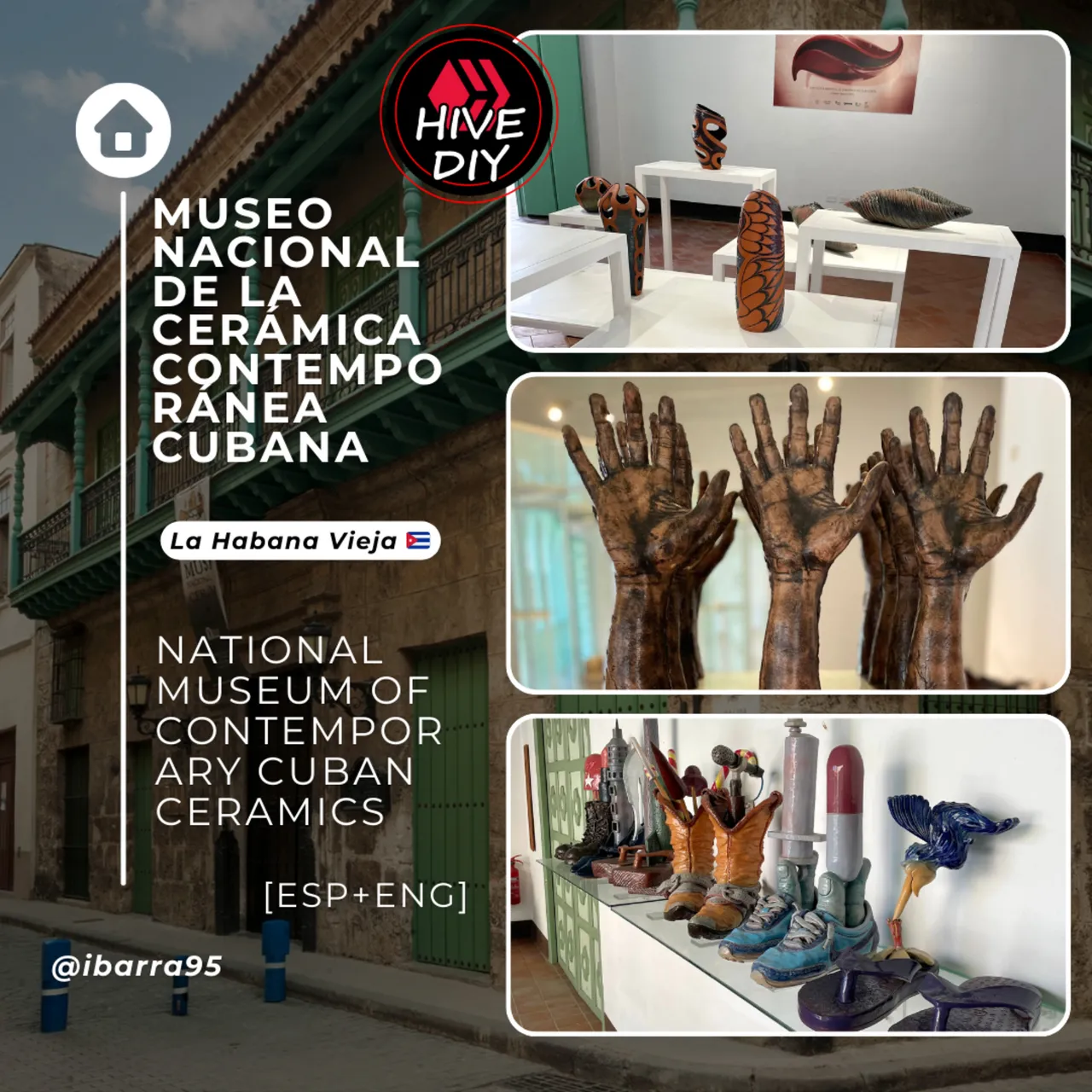
Hello community, family, and craft enthusiasts at HiveDiy! Greetings. Today, I’d like to share my visit to the grand historical museum of contemporary Cuban ceramics. Here, you’ll find significant works from our country, personal and collective exhibitions, learning workshops, national events, and a commitment to preserving both tangible and intangible heritage. Isn’t that fascinating? Come along for this wonderful journey! 😊
Hola comunidad, familia y amantes de manualidades en HiveDiy saludos. El día de hoy, vengo a mostrarles mi visita por el gran museo histórico de la cerámica contemporánea cubana, donde se exhiben obras significativas de nuestro país, exposiciones personales y colectivas, talleres de aprendizaje, eventos de carácter nacional, además se cuida el patrimonio tangible o intangible del local. Interesante verdad ¡Acompáñame por este maravilloso paseo 😉!
Historia / History
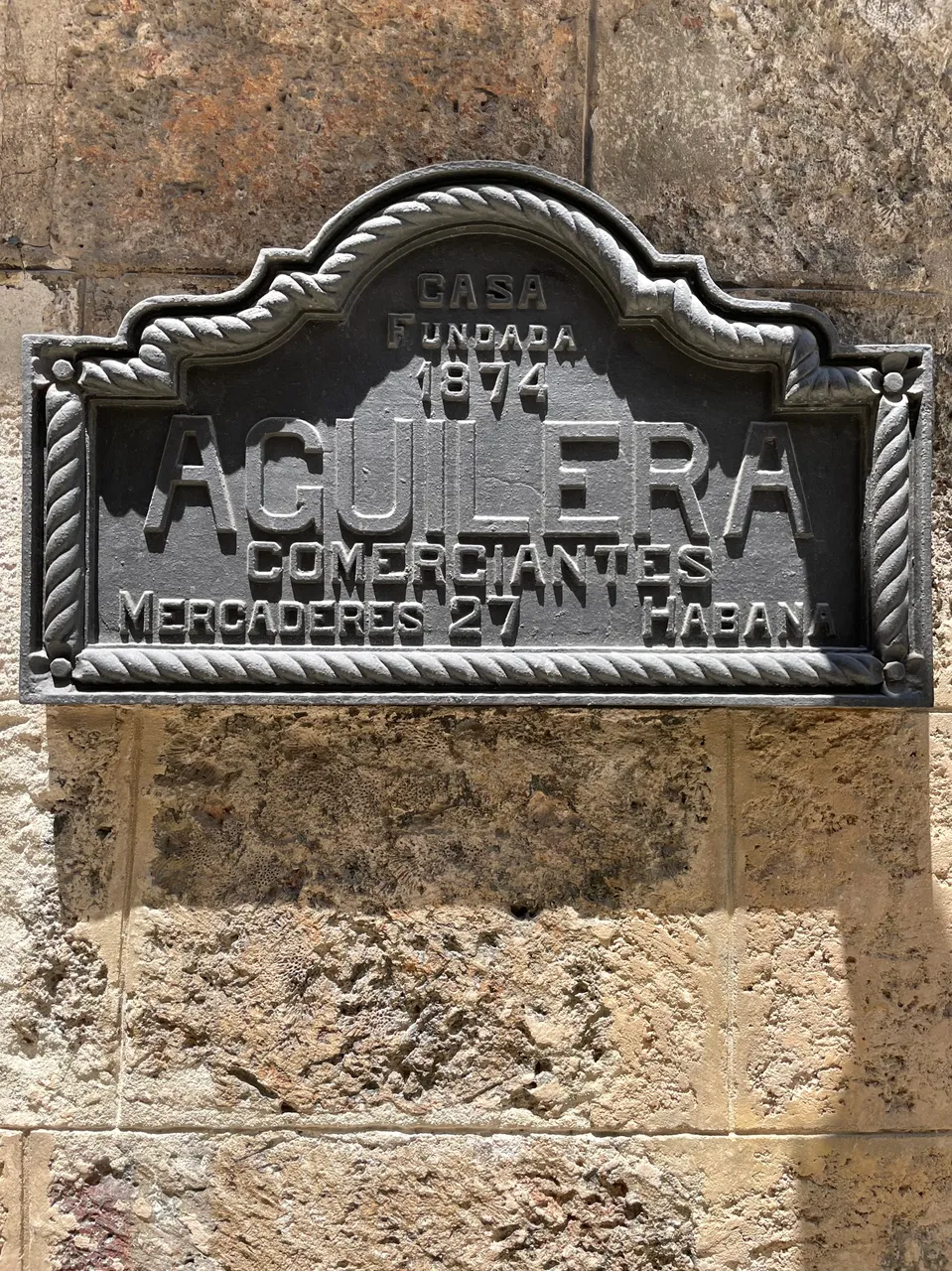
El museo fue inaugurado el 5 de mayo de 1990. Durante sus primeros quince años de existencia tuvo su sede en el Castillo de la Real Fuerza. En el 2005 fue trasladado hacia la otra edificación "La Casa Aguilera" que se distingue por su elegancia y majestuosidad; según su historia en 1728 la casa fue remodelada por su segundo dueño, el capitán Francisco Basabe. Se cree que en la casa vivió el poeta cubano José Fornaris.
También estuvo allí la primera casa comercial que existió en dicho lugar, fundada en 1874. Esta edificación ha llegado hasta nuestros días conservando su arquitectura original gracias a la restauración hecha por su último propietario Julián Aguilera y Raymond. Los trabajos de investigación histórico-arqueológicos demuestran que, a pesar de las transformaciones exteriores, la casa se mantuvo según la concebió el capitán Francisco Basabe.
También estuvo allí la primera casa comercial que existió en dicho lugar, fundada en 1874. Esta edificación ha llegado hasta nuestros días conservando su arquitectura original gracias a la restauración hecha por su último propietario Julián Aguilera y Raymond. Los trabajos de investigación histórico-arqueológicos demuestran que, a pesar de las transformaciones exteriores, la casa se mantuvo según la concebió el capitán Francisco Basabe.
The museum was inaugurated on May 5, 1990. During its first fifteen years of existence, it was located in the Castillo de la Real Fuerza. In 2005, it was moved to the other building ‘La Casa Aguilera,’ which is distinguished by its elegance and majesty; according to its history, in 1728 the house was remodeled by its second owner, Captain Francisco Basabe. It is believed that the Cuban poet José Fornaris lived in the house.
The first commercial house that existed in this place, founded in 1874, was also located there. This building has survived to the present day preserving its original architecture thanks to the restoration made by its last owner Julián Aguilera y Raymond. The historical-archeological research work shows that, in spite of the exterior transformations, the house was maintained as Captain Francisco Basabe conceived it.
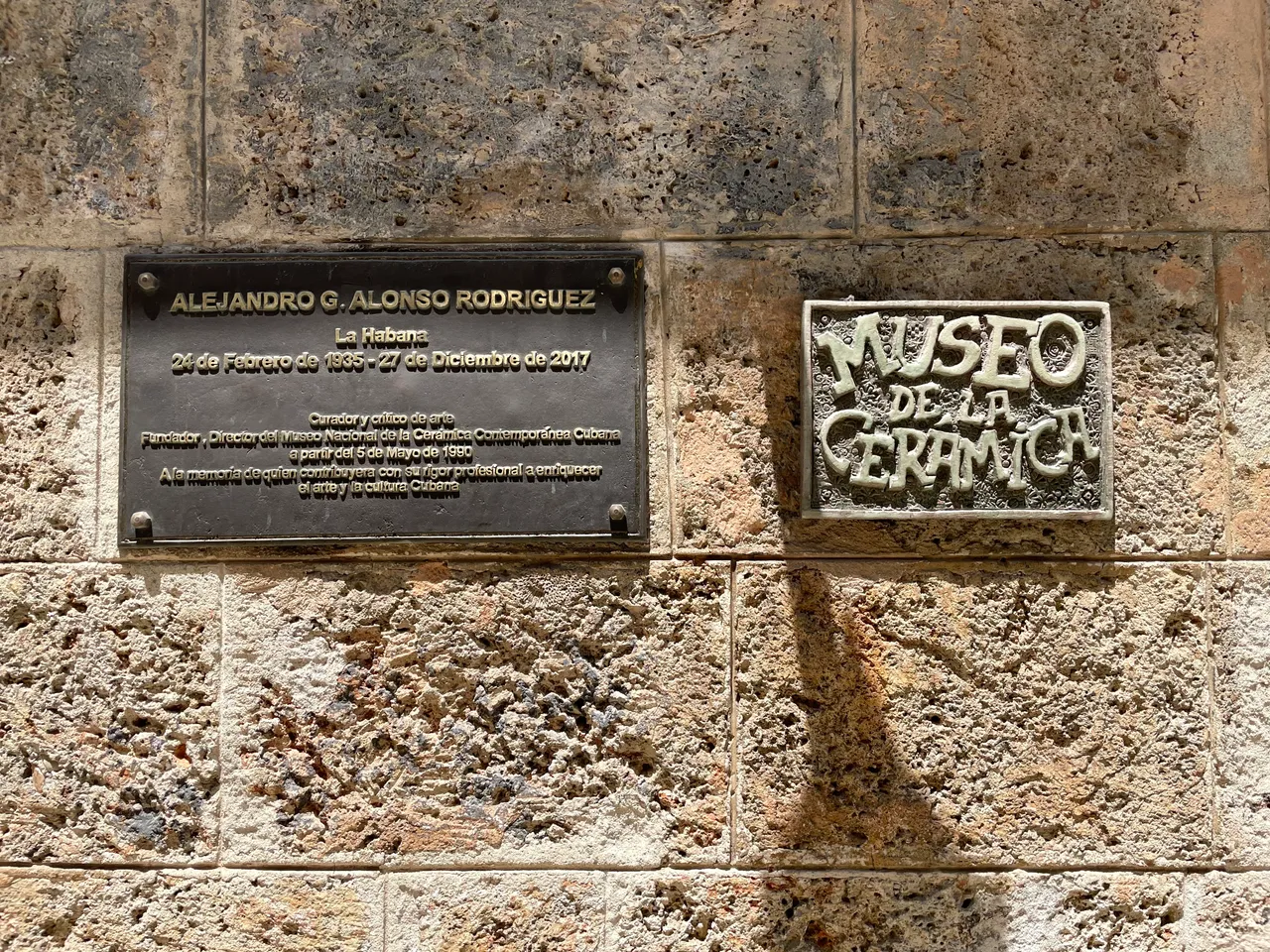
Primer Piso / First Floor
En la primera sala al entrar, se presenta una exposición personal titulada "Reflejos" de Yordanka Aguilar Dorta artista de Santiago de Cuba. Las piezas se caracterizan por las curvas onduladas, sus colores que logran realizar efectos muy bonitos entre luces y sombras, que asimismo preservan la fusión entre lo tradicional y la contemporaneidad.
In the first room upon entering, a personal exhibition entitled "Reflejos" (Reflections) by Yordanka Aguilar Dorta, an artist from Santiago de Cuba, is presented. The pieces are characterized by the undulating curves, its colors that achieve very beautiful effects between light and shadow, which also preserve the fusion between the traditional and the contemporary.


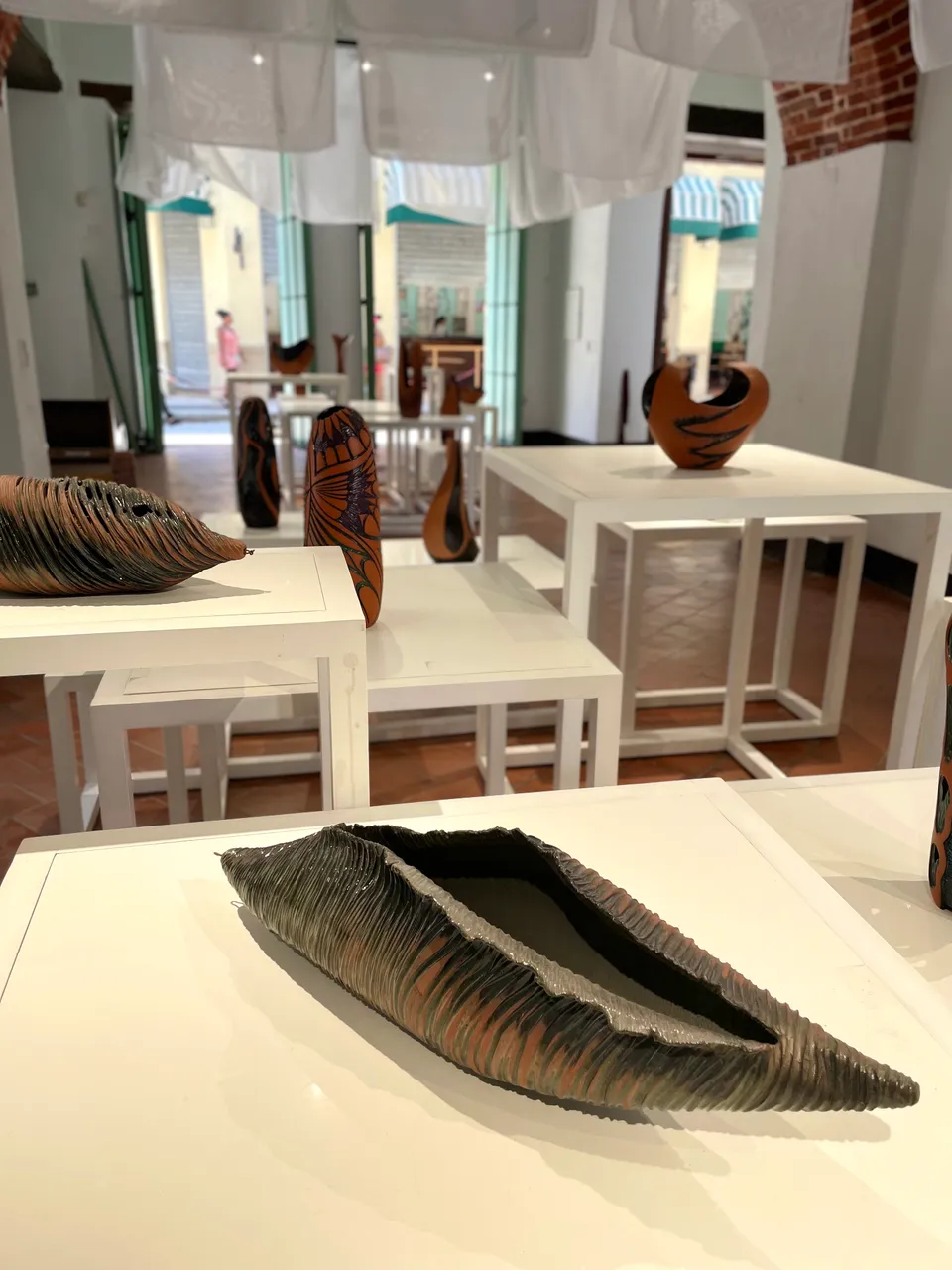
La parte trasera del museo posee un patio precioso con macetas de plantas exóticas y un sitio arqueológico donde fueron encontrados varios artículos de valor patrimonial (letrinas, vasijas,etc) de la época, con gran alcance para los arqueólogos, el cual observarán que se mantiene como testigo la estructura y a la vez es creativo por el adorno de artistas que trabajaron para embellecerlo.
The back of the museum has a beautiful courtyard with pots of exotic plants and an archaeological site where several items of heritage value were found (latrines, vessels, etc.) of the time, with great scope for archaeologists, which will observe that the structure is maintained as a witness and at the same time is creative by the adornment of artists who worked to beautify it.
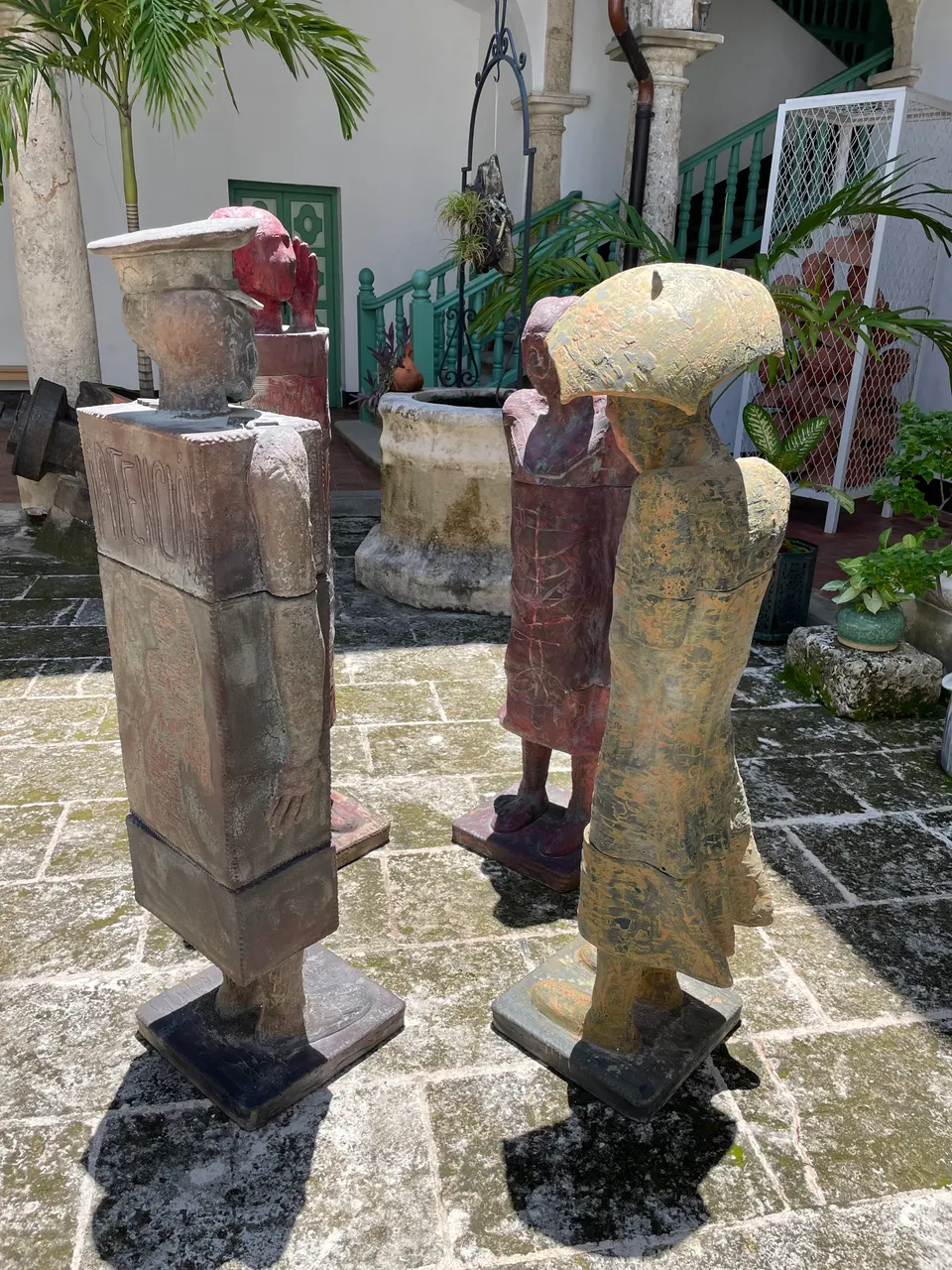

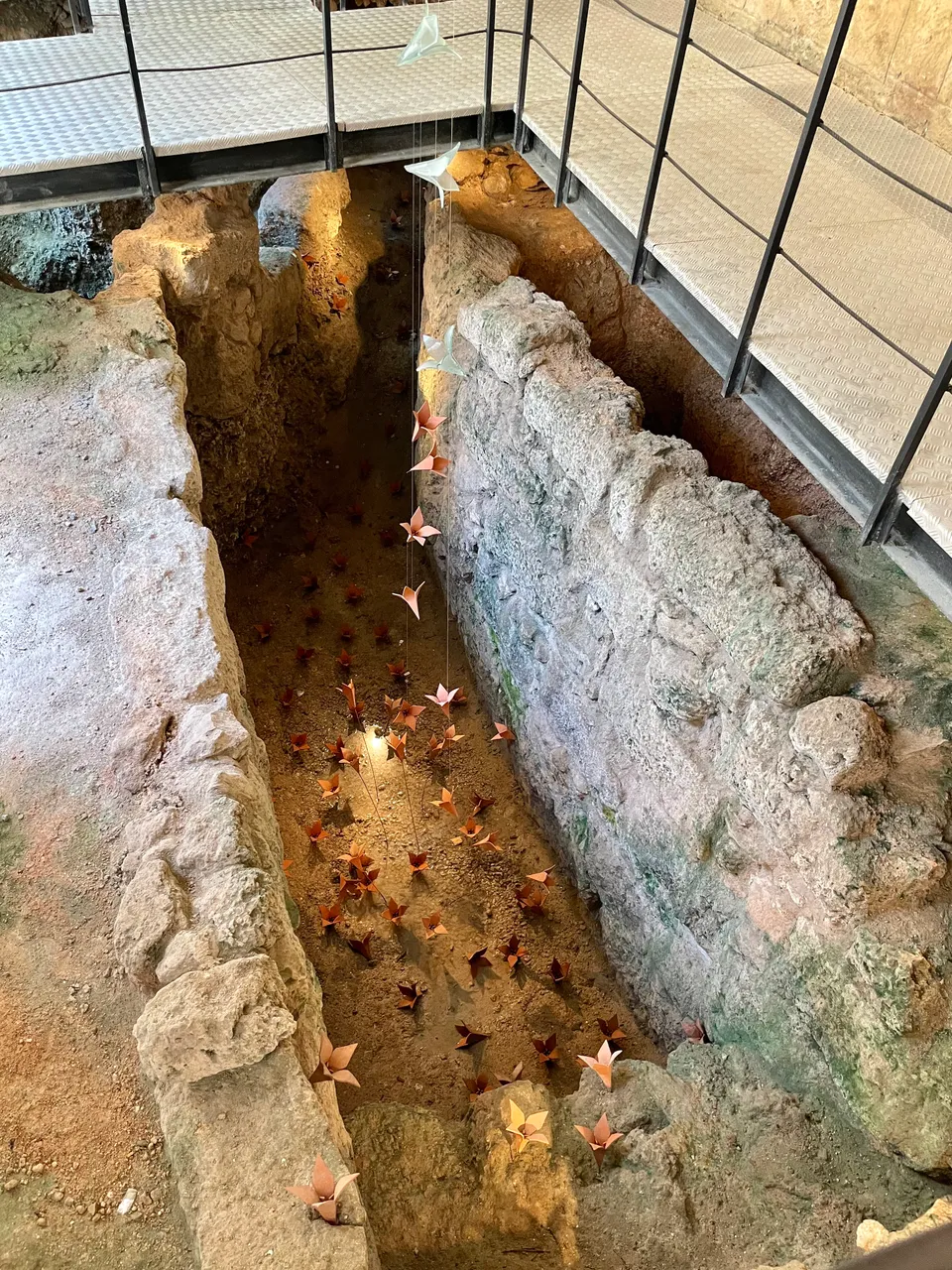
Segundo Piso / Second Floor
En la planta alta se ubica el panorama de la cerámica artística cubana desde 1950 hasta nuestros días, donde se exponen las obras realizadas por brillantes creadores cubanos: Amelia Peláez, Wilfredo Lam, René Portocarrero, Martha Arjona, Alfredo Sosabravo, Amelia Carballo, Aniceto Mario Díaz, Tomás Núñez (Jonhy), Ismary González entre otros muchos artistas.
Al instante de subir por las escaleras a las afueras de los pasillos, se encuentran variadas esculturas pequeñas y grandes, así como cuadros de cerámica, muy originales, imaginativos y humorísticos para muchos 😄 jjj.
Al instante de subir por las escaleras a las afueras de los pasillos, se encuentran variadas esculturas pequeñas y grandes, así como cuadros de cerámica, muy originales, imaginativos y humorísticos para muchos 😄 jjj.
On the upper floor is located the panorama of Cuban artistic ceramics from 1950 to the present day, where the works made by brilliant Cuban creators are exhibited: Amelia Peláez, Wilfredo Lam, René Portocarrero, Martha Arjona, Alfredo Sosabravo, Amelia Carballo, Aniceto Mario Díaz, Tomás Núñez (Jonhy), Ismary González among many other artists.
As you walk up the stairs outside the halls, you will find a variety of small and large sculptures, as well as ceramic paintings, very original, imaginative and humorous for many 😄 jjj.
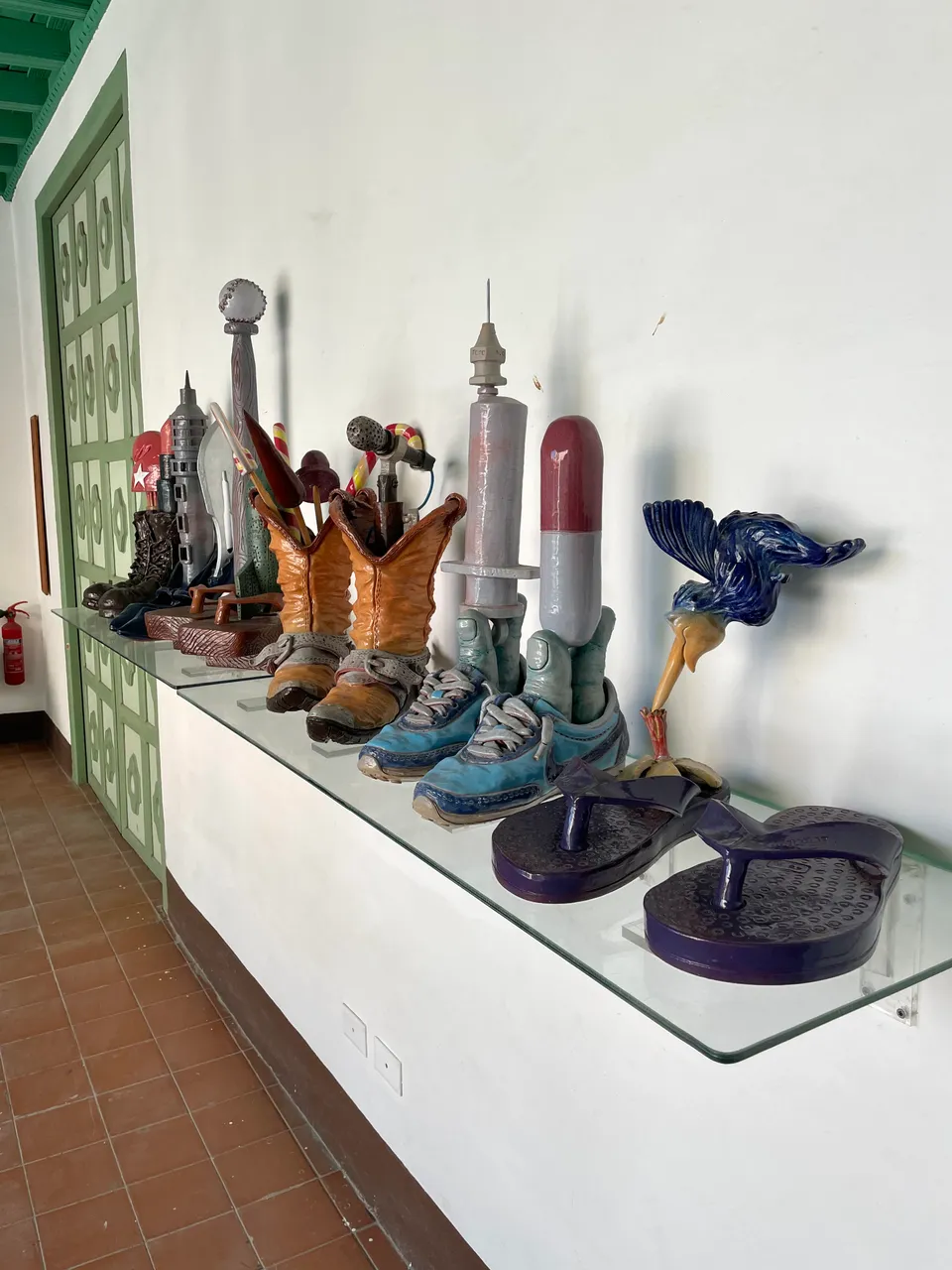
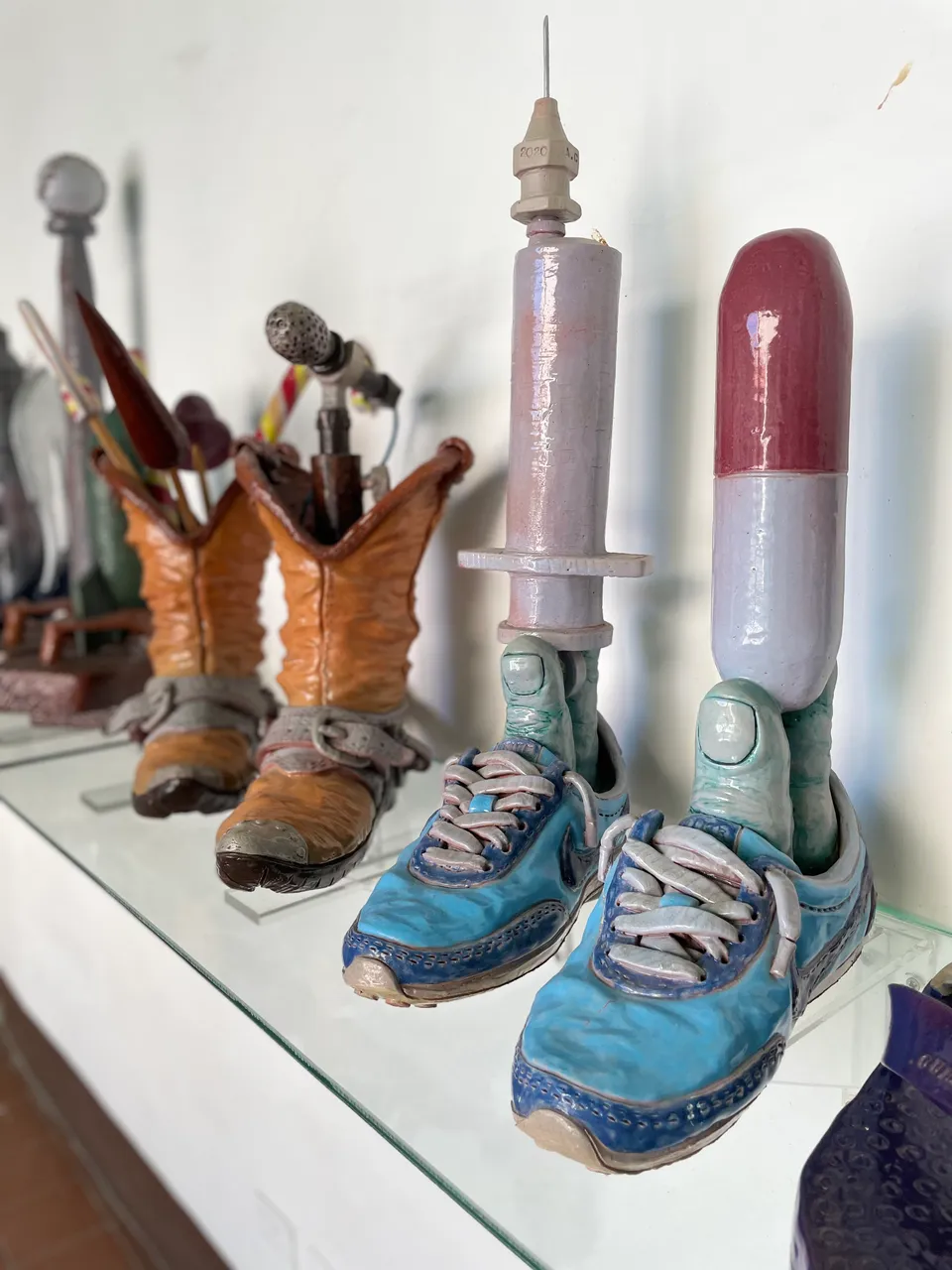
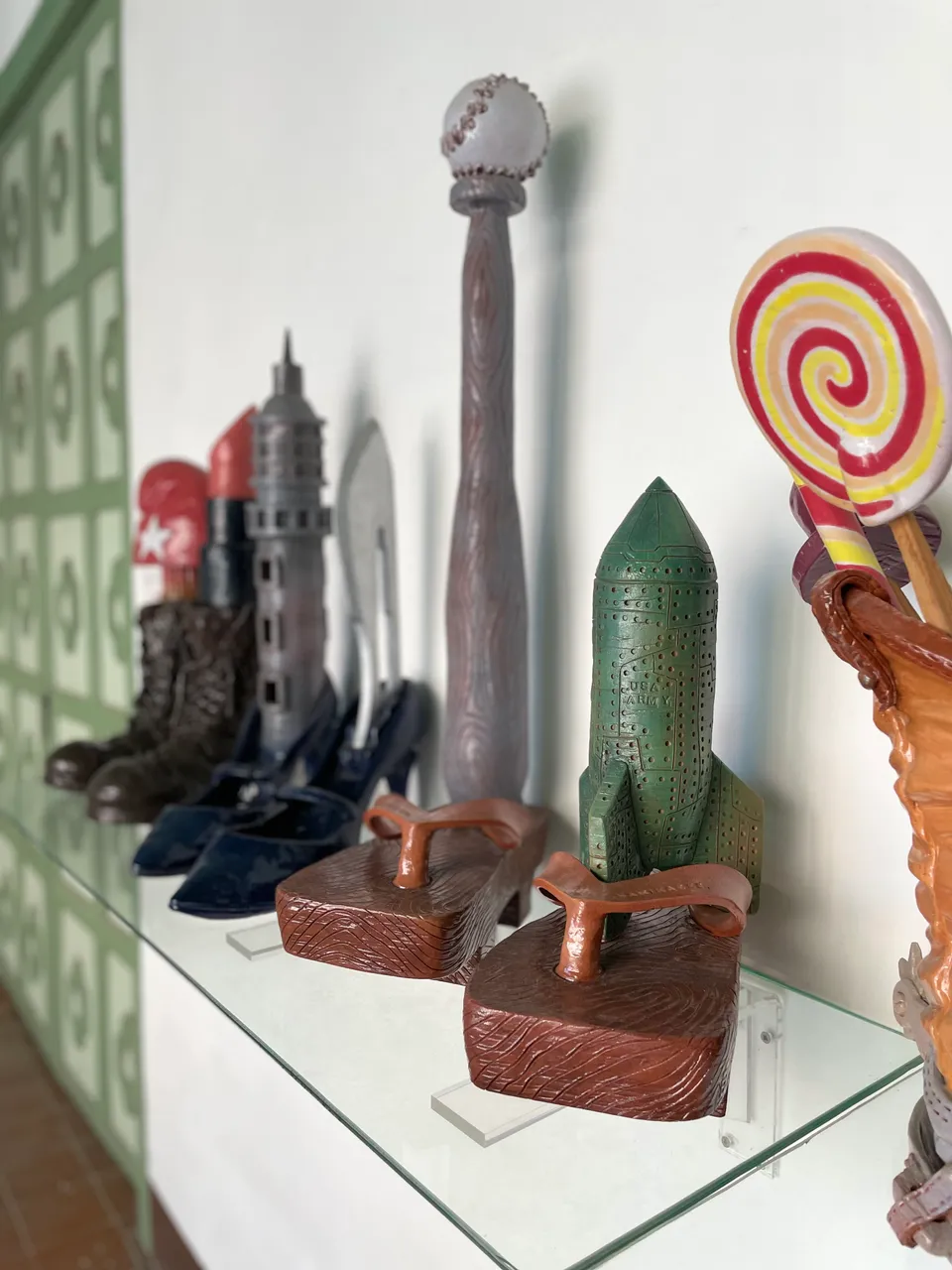
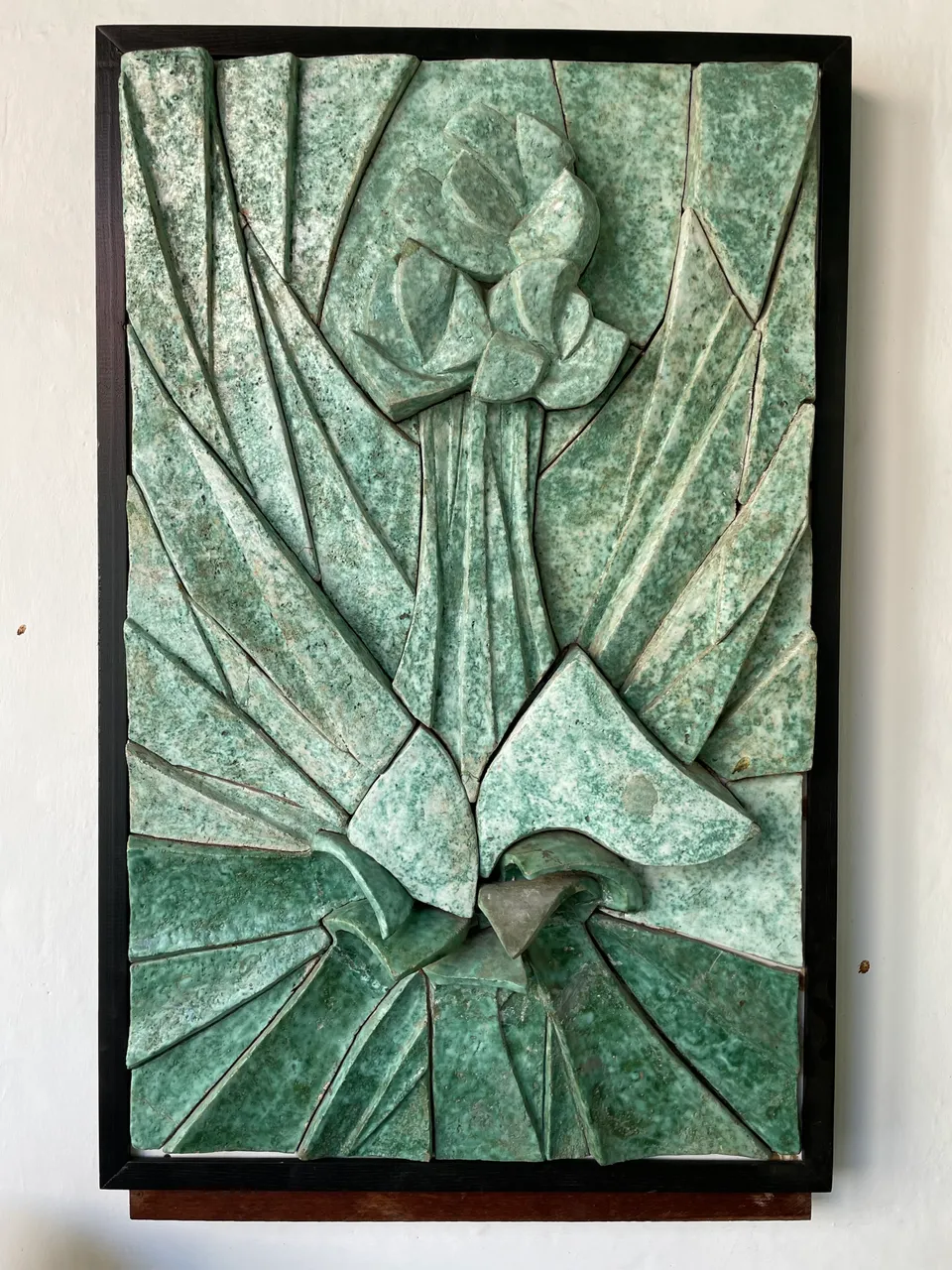
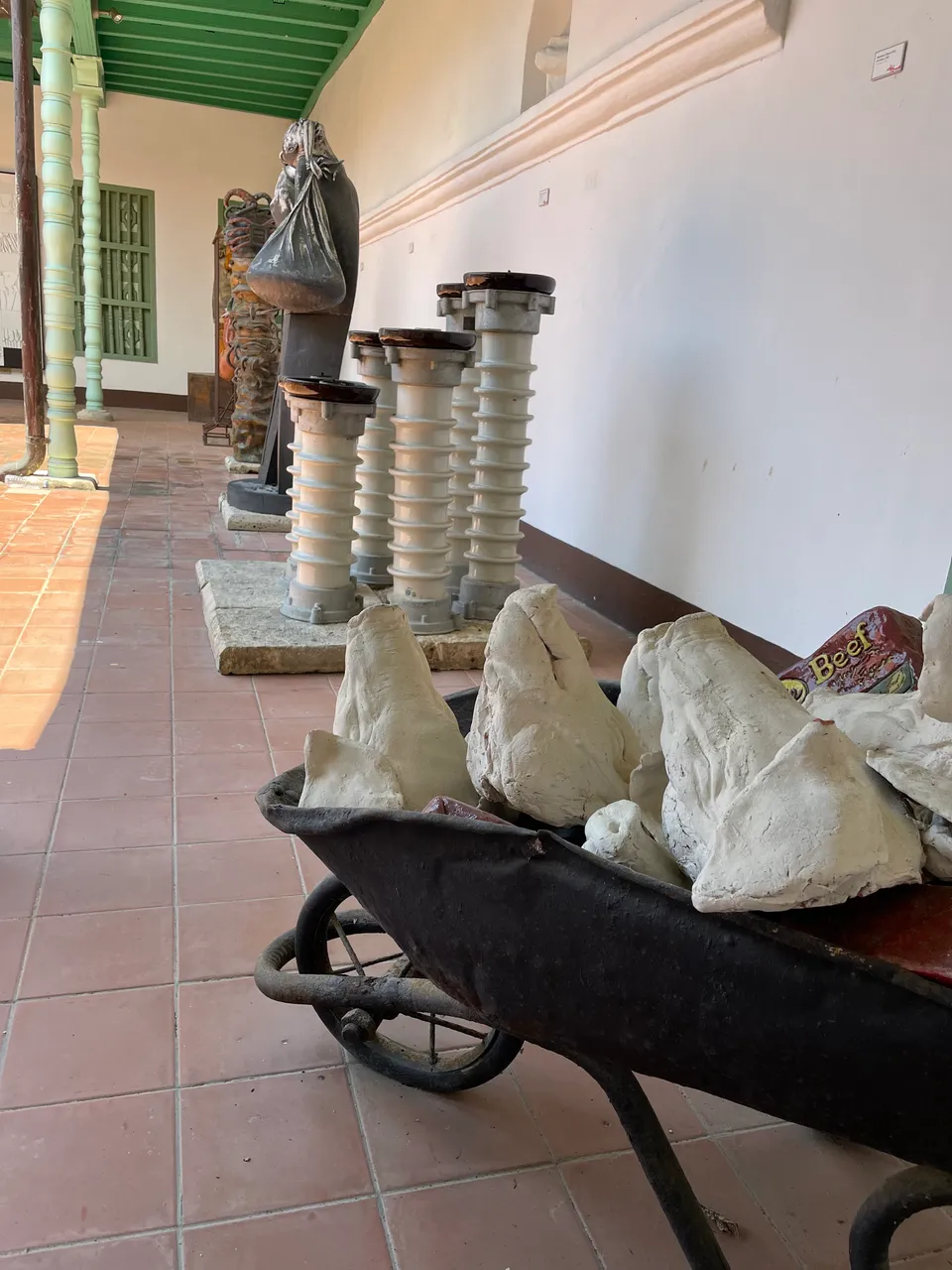
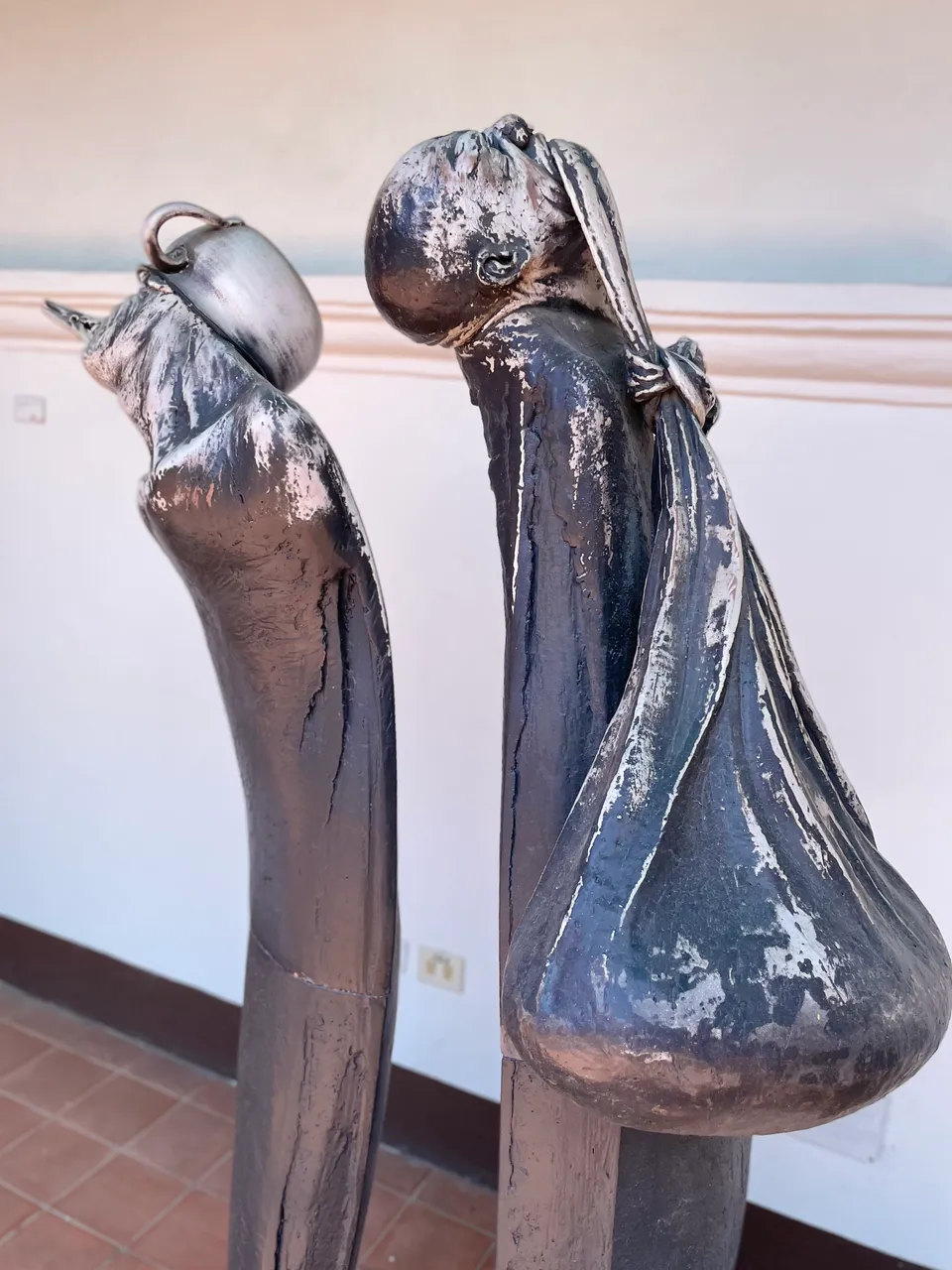
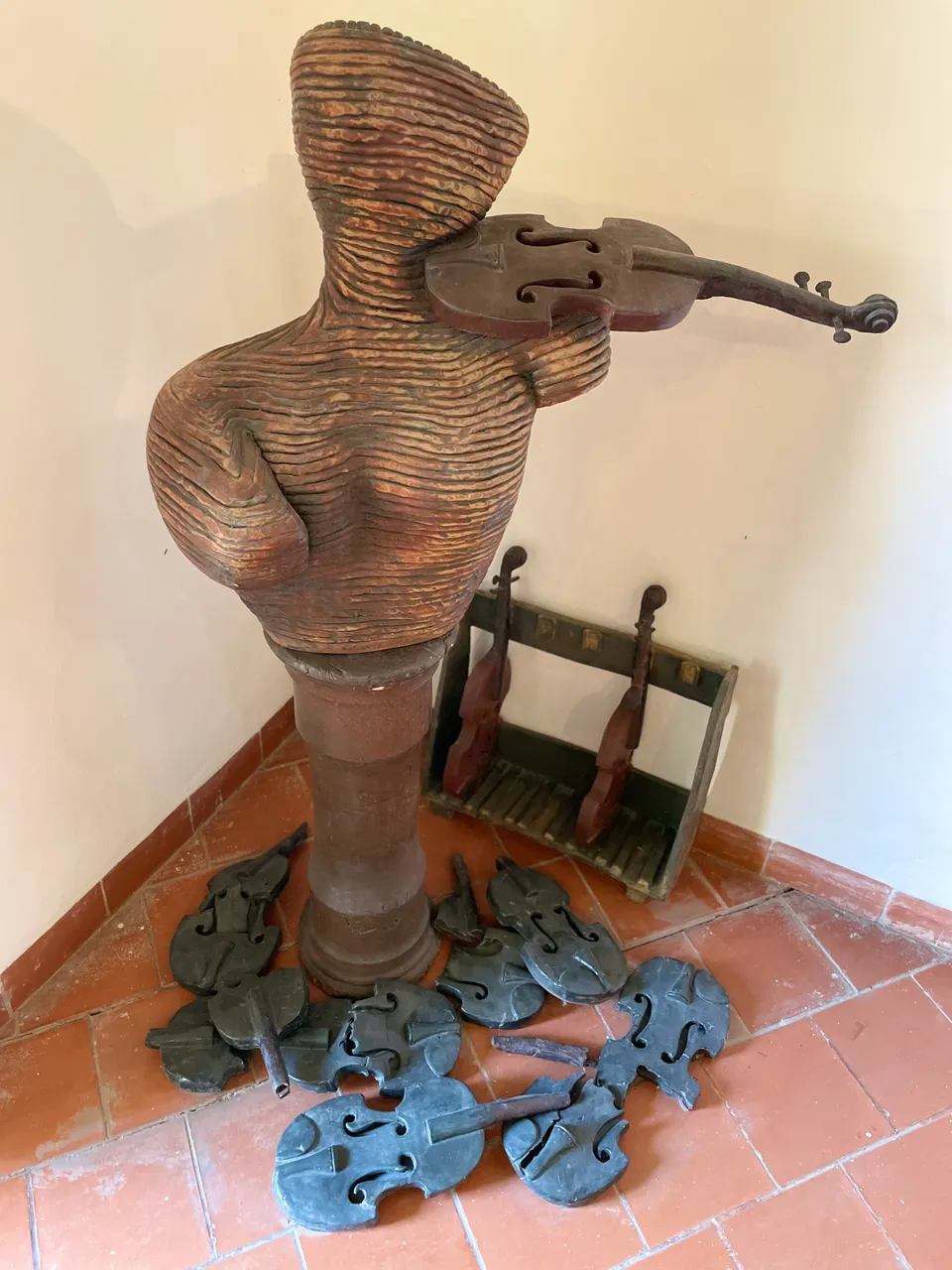
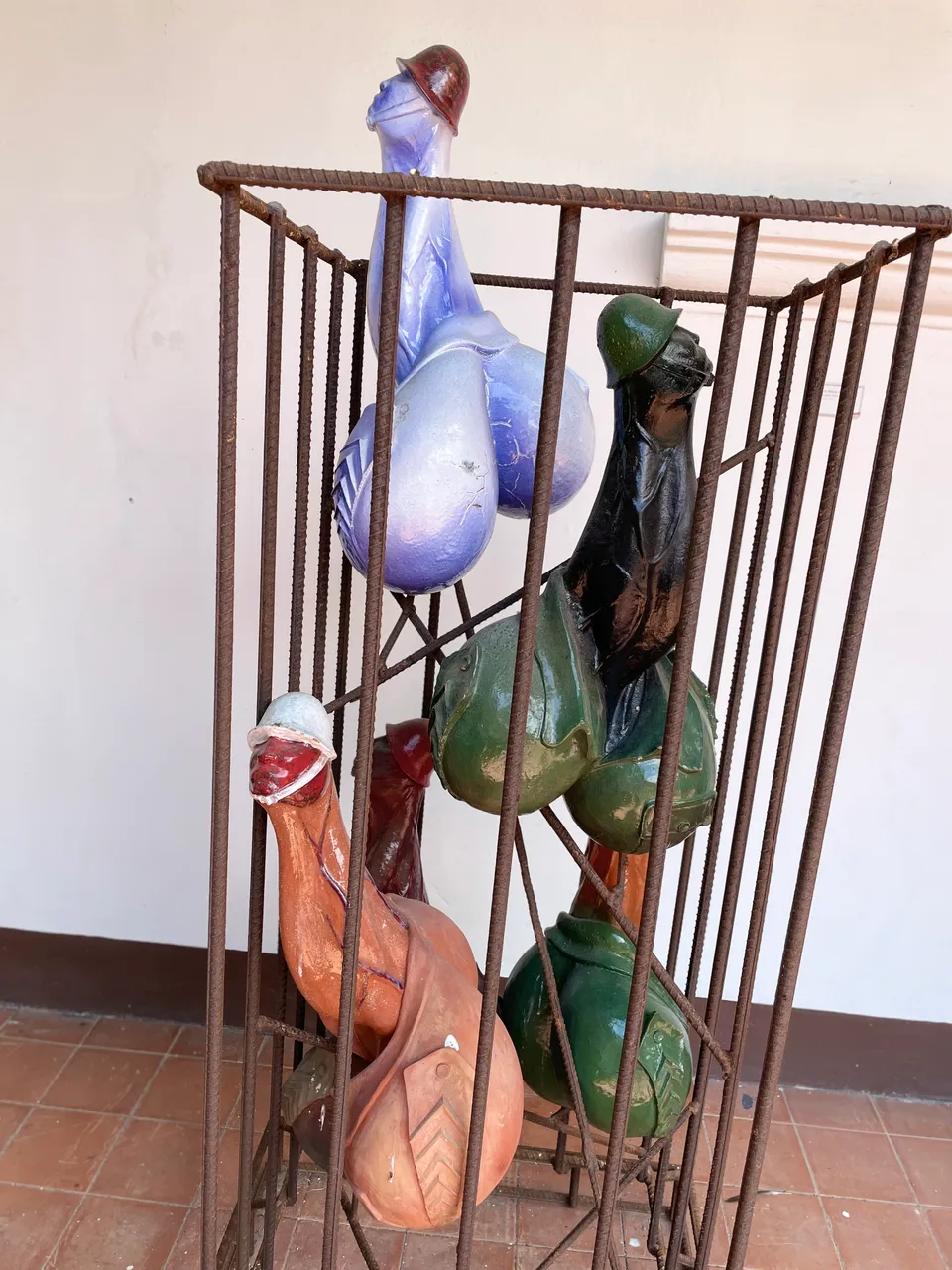
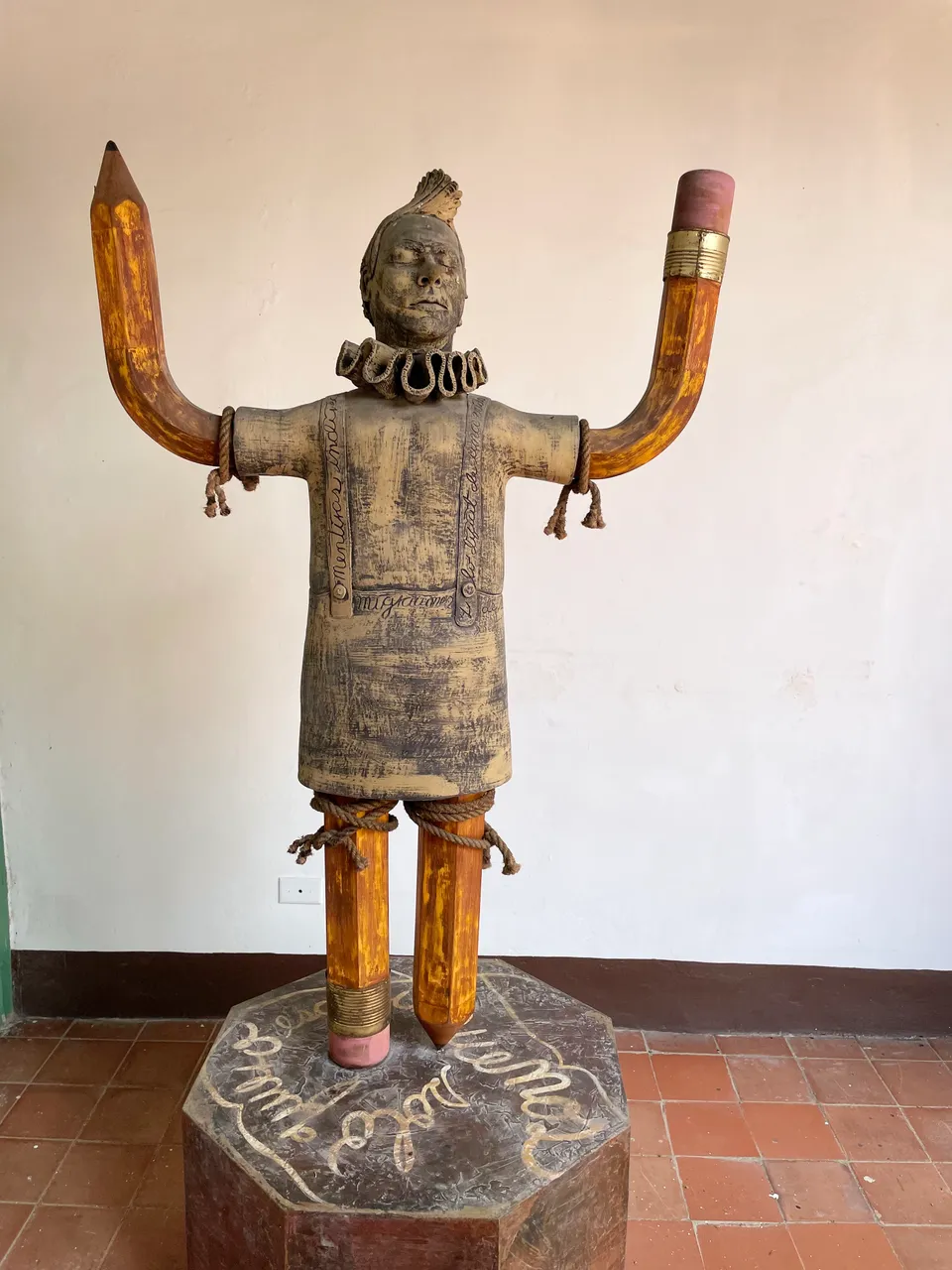
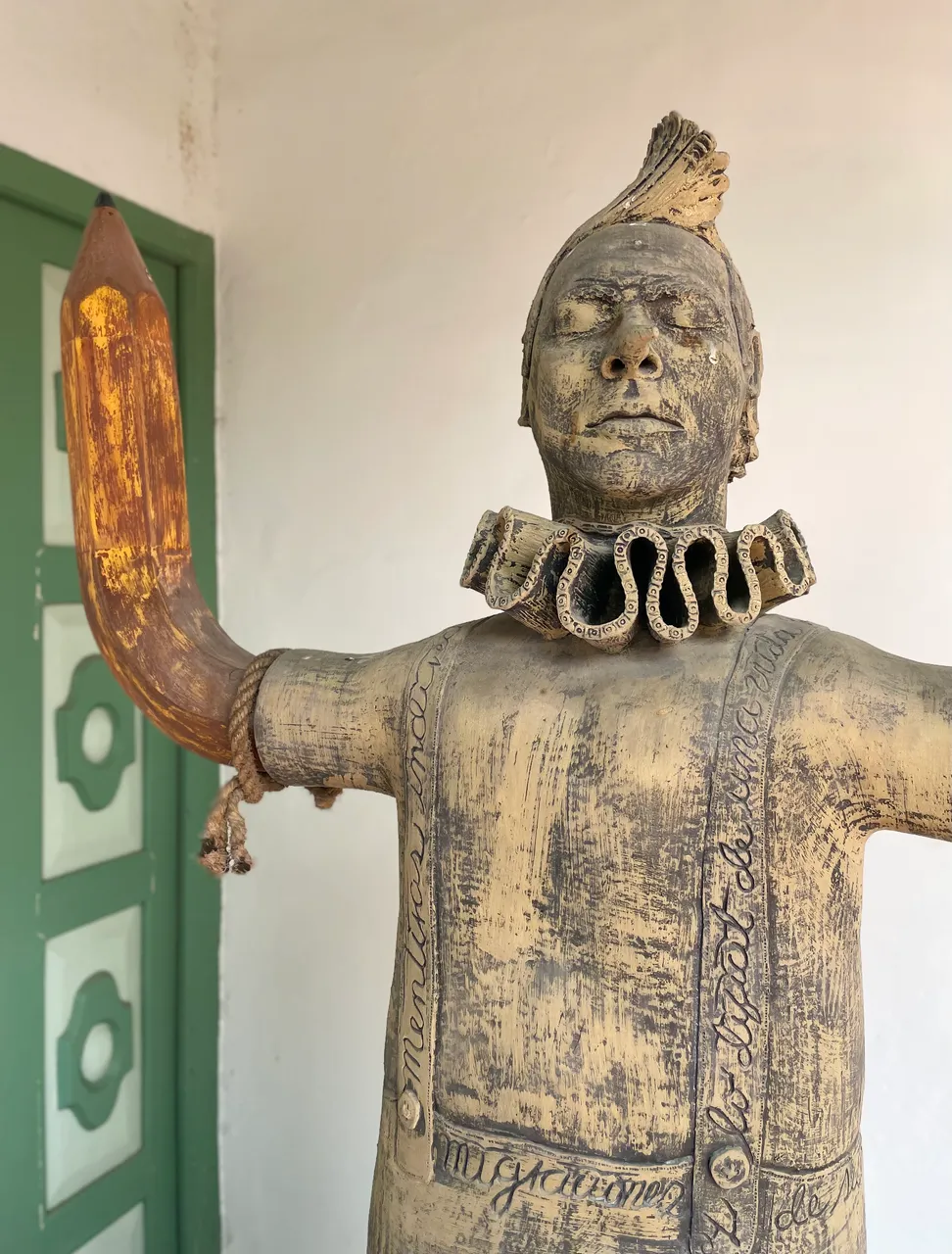
Los interiores del segundo piso de la edificación cuentan con muestras numerosas de obras preciosas tanto de finales del siglo XX como del siglo actual, muchas fueron donación directa por parte de los creadores o préstamo de carácter indefinido. La cantidad de piezas que se exhibe en las estaciones han participado en las Bienales de Cerámica un evento anual donde los artistas pueden mostrar su talento, tipologías creativas, diversidad técnica, así como otros aspectos.
The interiors of the second floor of the building have numerous samples of precious works of both the late twentieth century and the current century, many were direct donation by the creators or loan of indefinite character. The number of pieces exhibited in the stations have participated in the Biennials of Ceramics, an annual event where artists can show their talent, creative typologies, technical diversity, as well as other aspects.
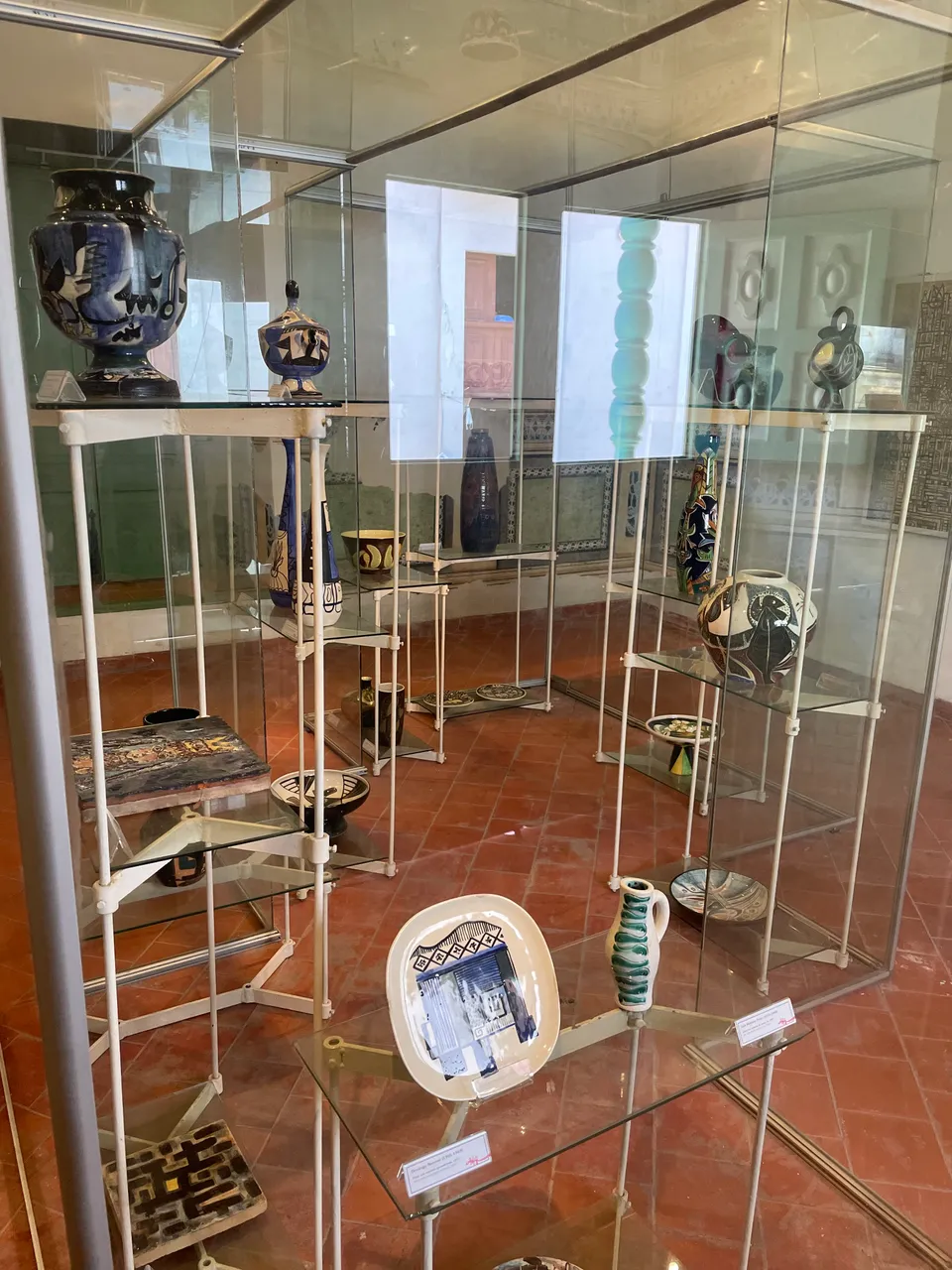
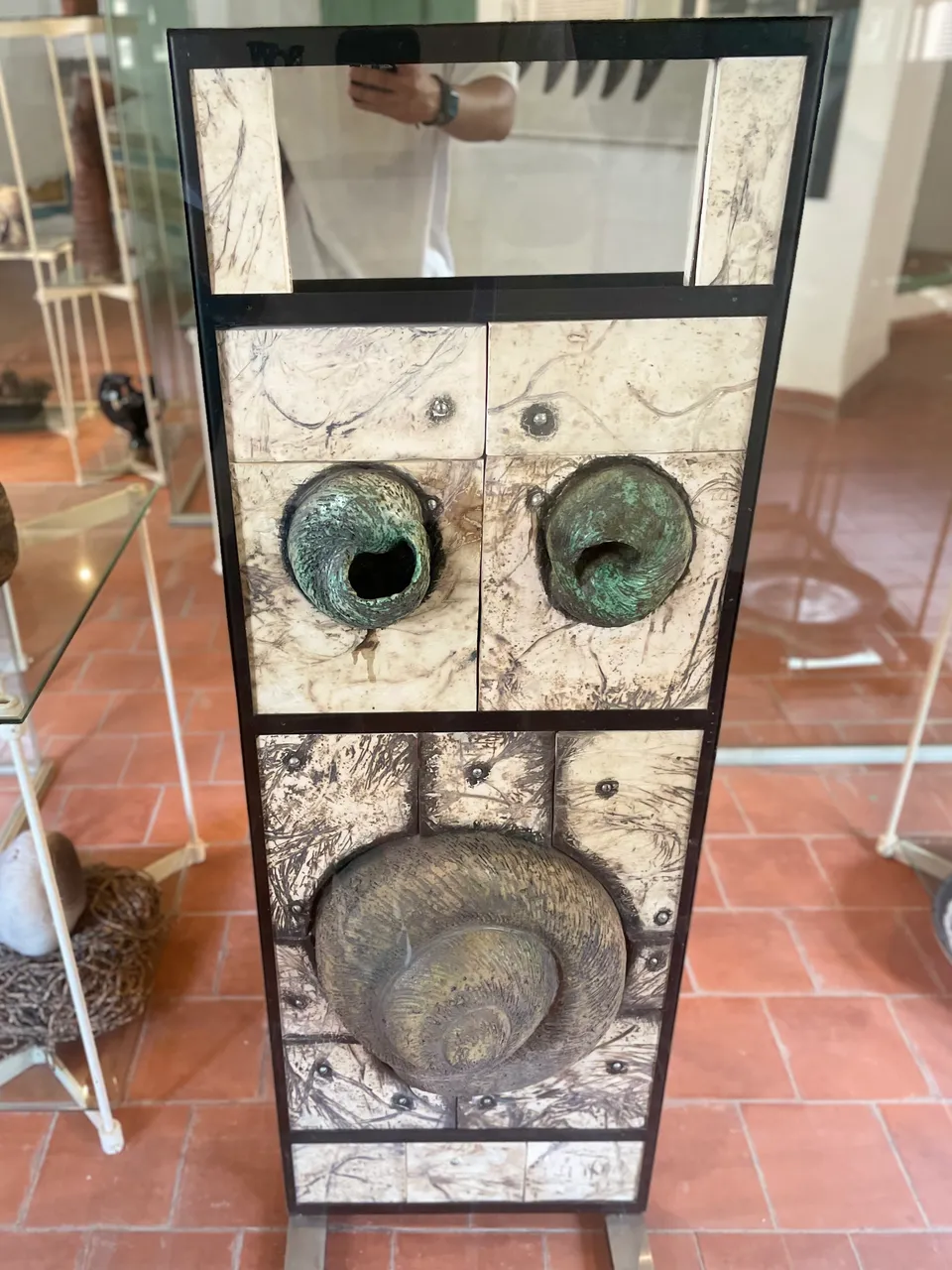
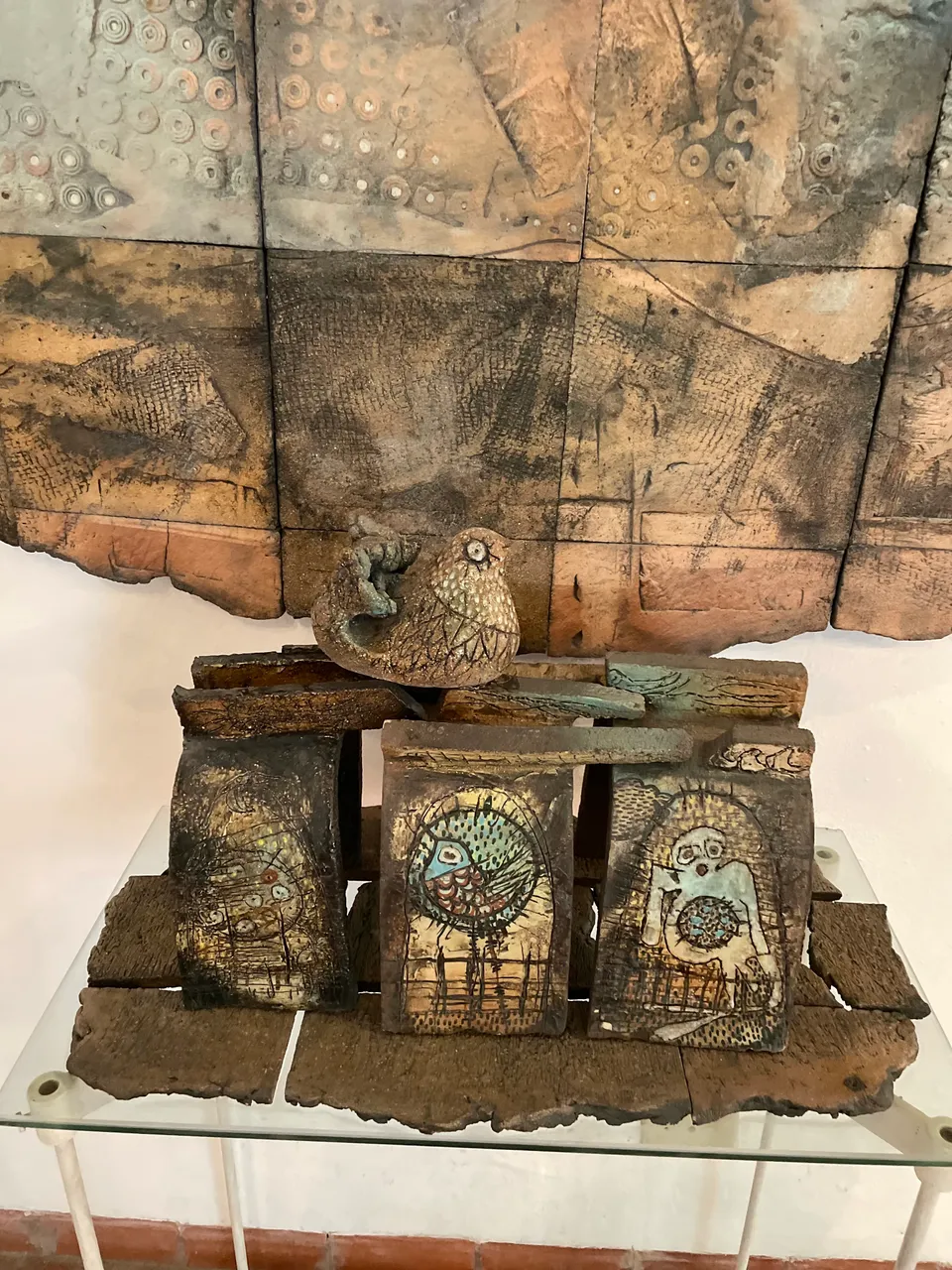
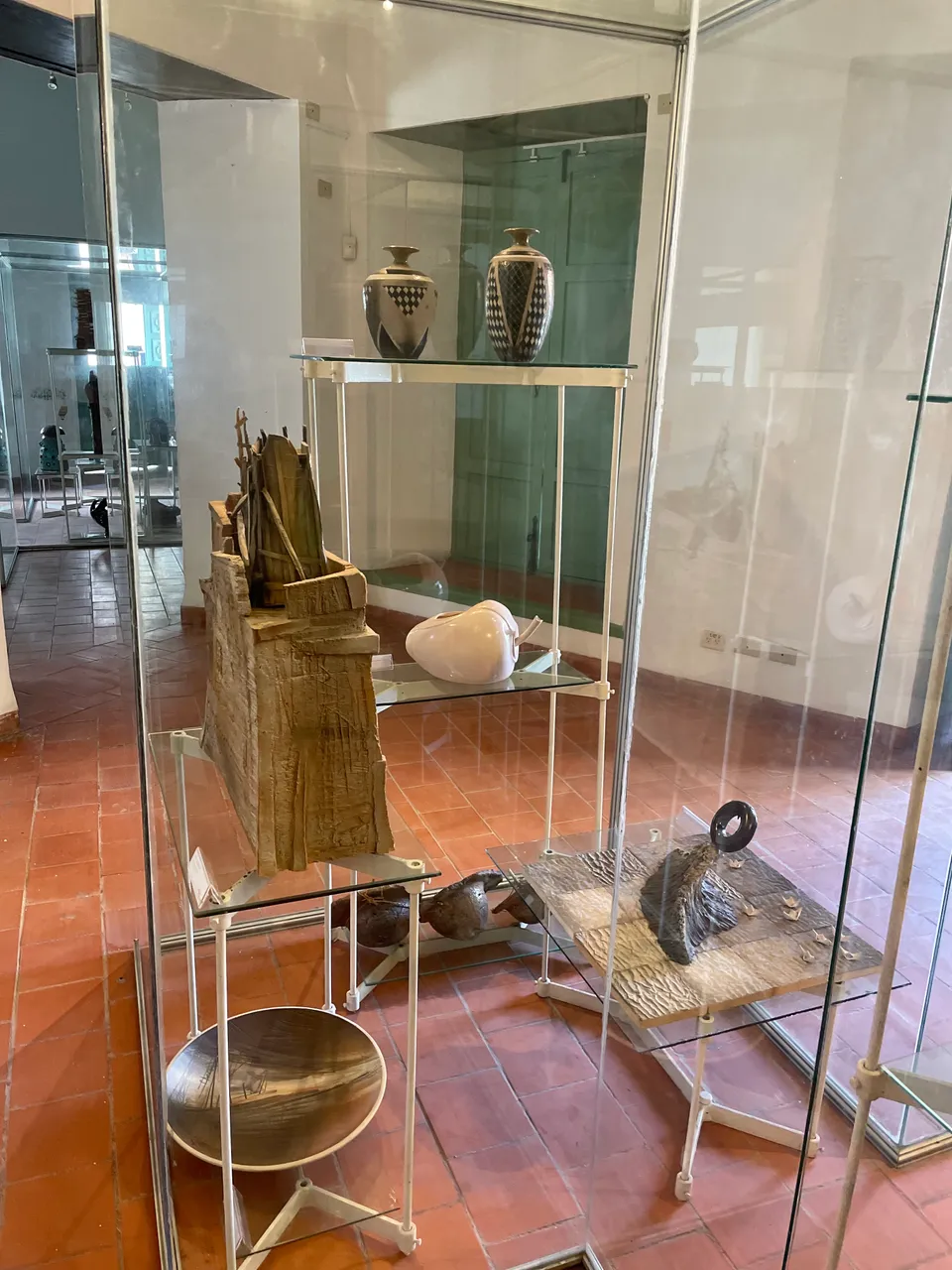
ÁNGEL ROGELIO OLIVA
(La Habana, 1952)
De la serie «Reflejos, de la relatividad», 2004
Arcilla roja, esmaltes, espejo, metal ( Red clay, enamels, mirror, metal )
155 x 52 x 52 cm
Aquí estamos ante una irónica observación sobre la ambivalencia de las votaciones unánimes.
Here we are faced with an ironic observation about the ambivalence of unanimous votes.
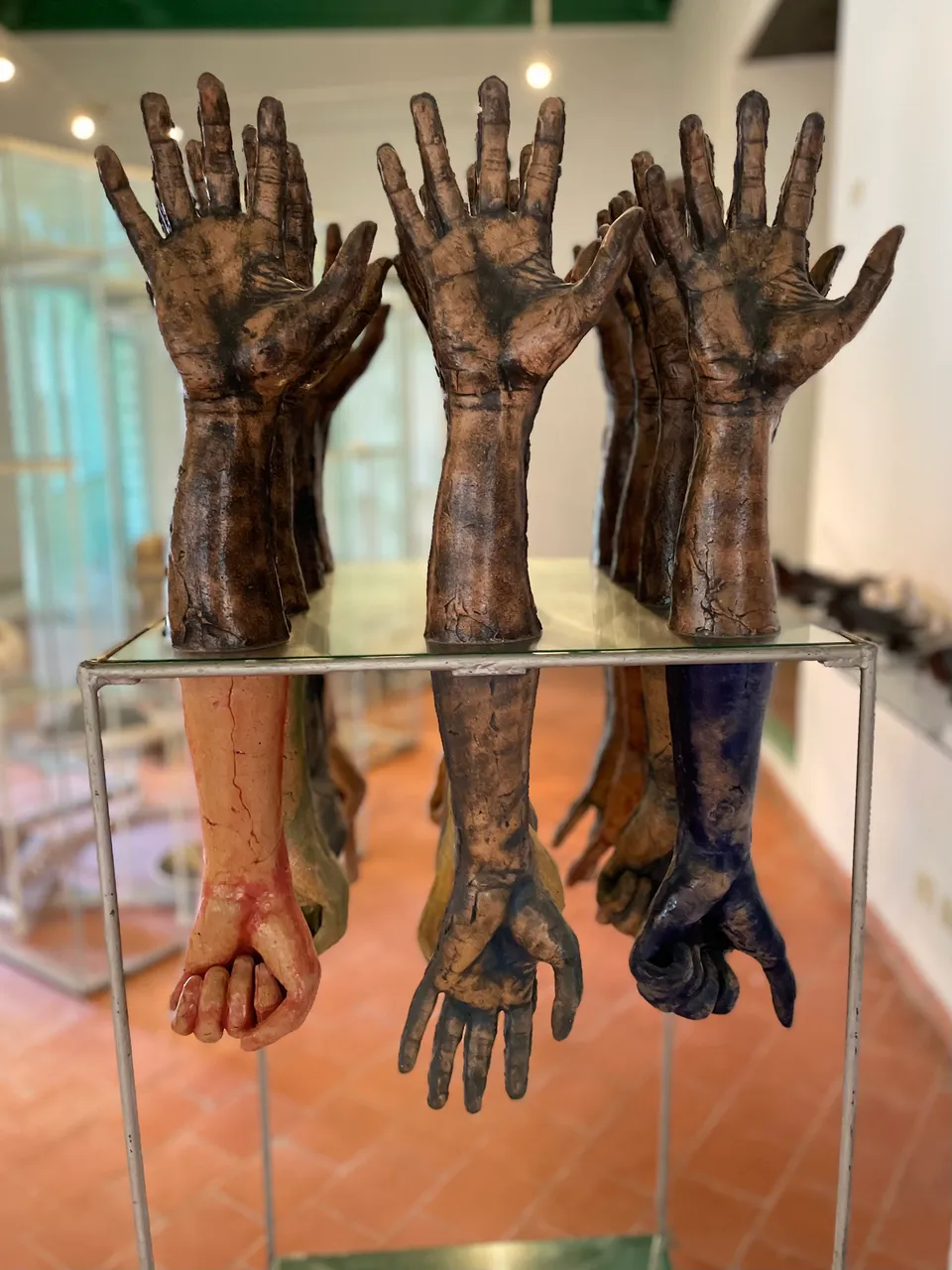
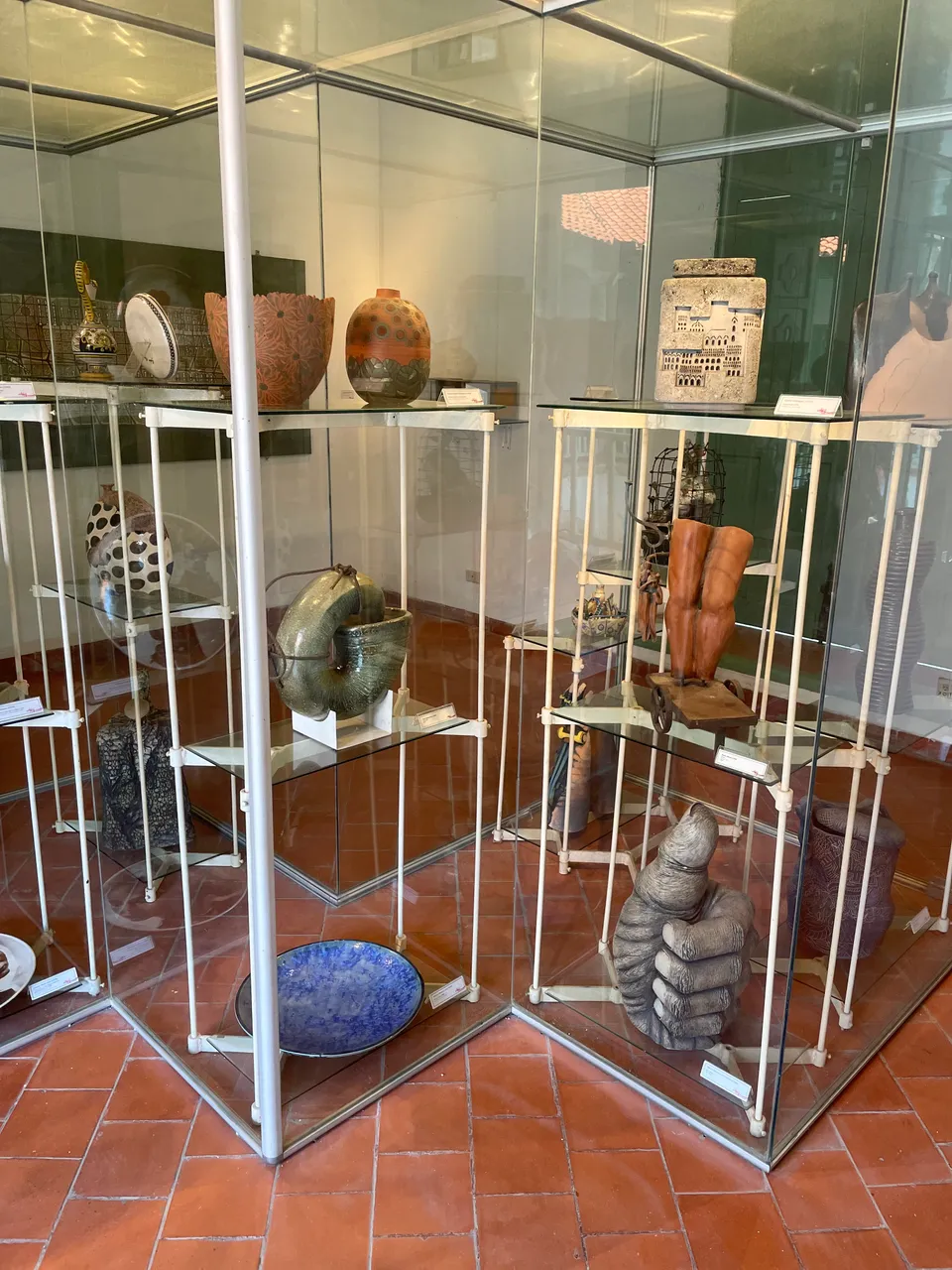
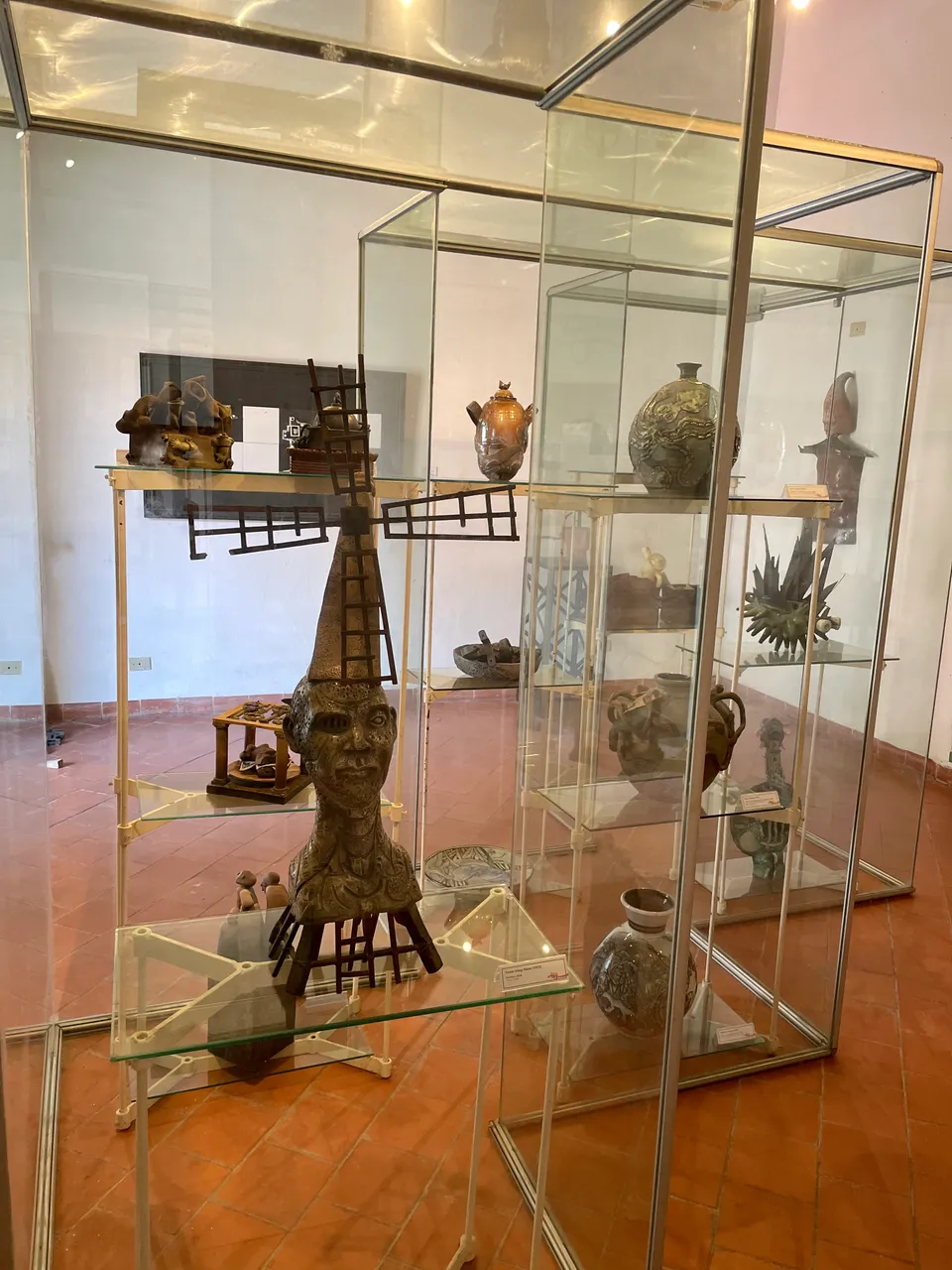
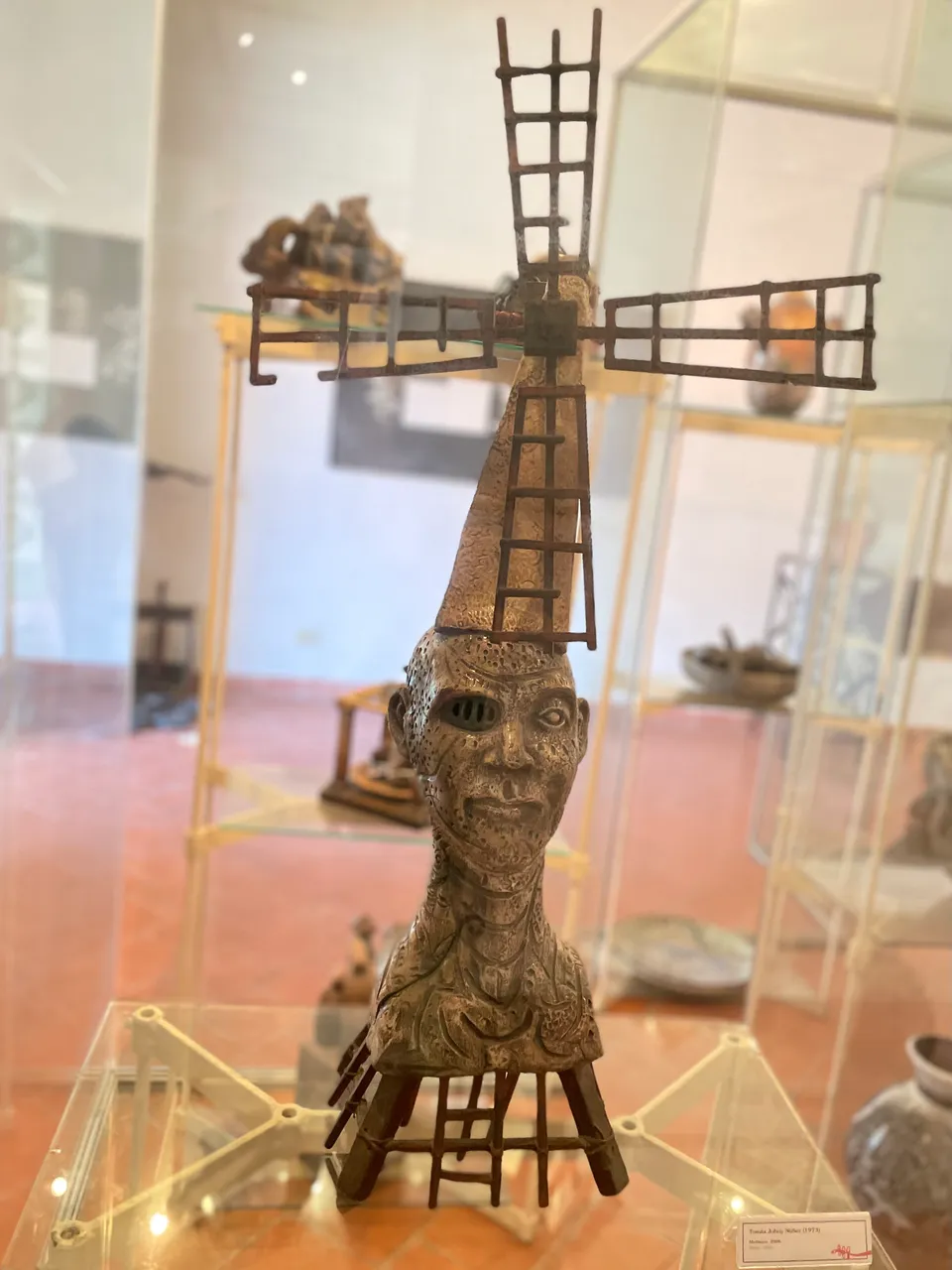
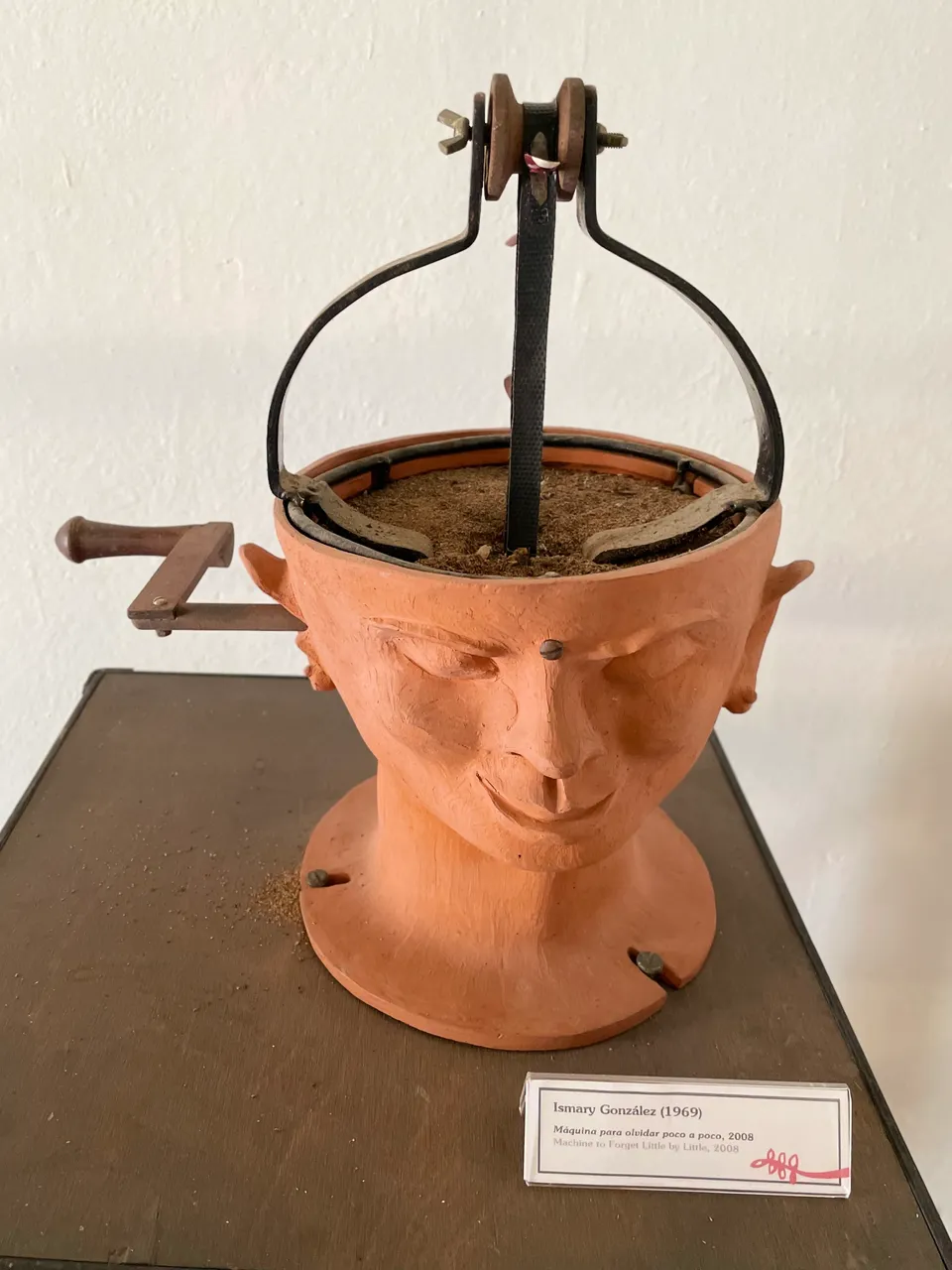
OSCAR RODRÍGUEZ LASSERIA
(Camagüey, 1950)
No me pongan en lo oscuro, 1993
Arcilla roja, esmaltes, metal ( Red clay, glazes, metal )
15 x 28 x 10 cm
La obra se inserta en una línea de creación sostenida sobre profundas bases conceptuales a través de un gran dramatismo y matices de orden surreal. Dentro de las cabezas contiene la bandera cubana.
The work is inserted in a line of creation sustained on deep conceptual bases through a great dramatism and shades of surreal order. Inside the heads is the Cuban flag.
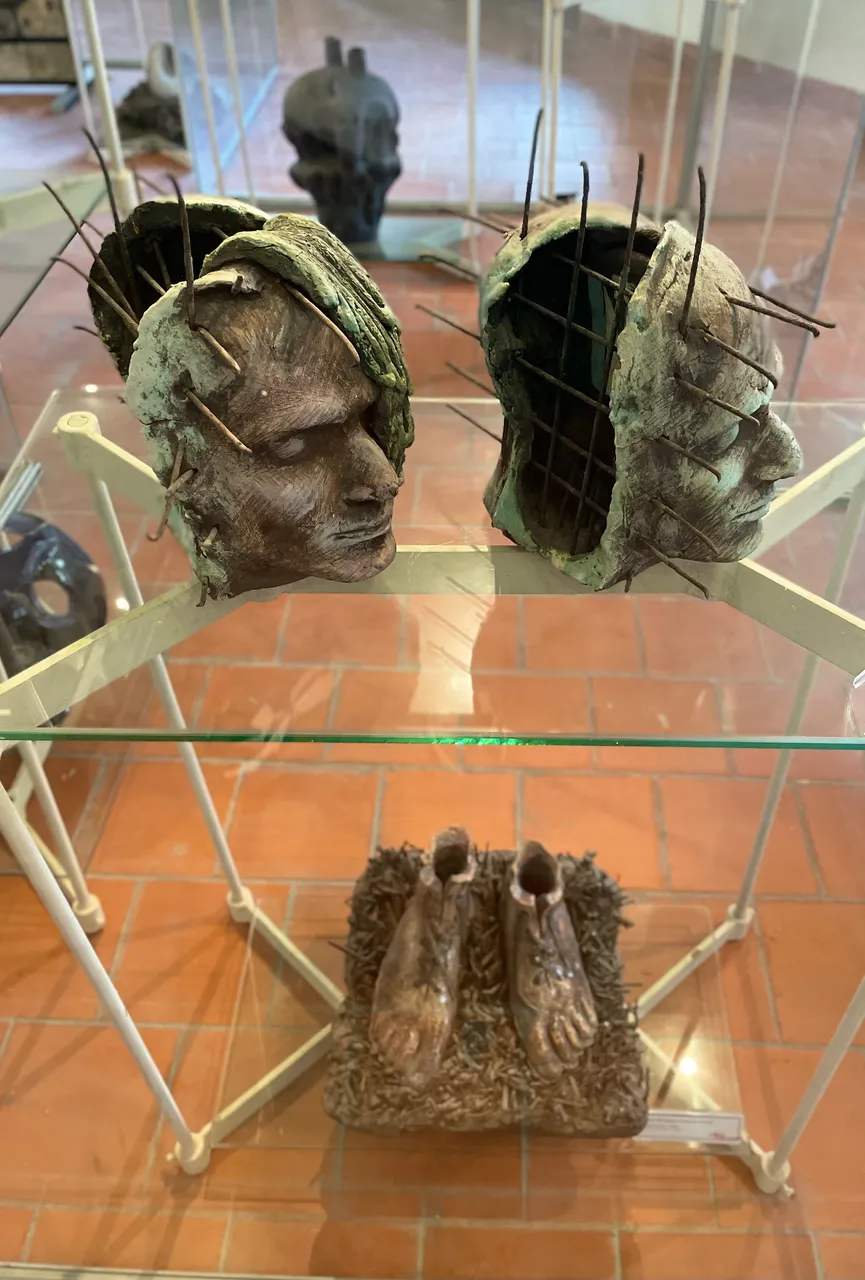
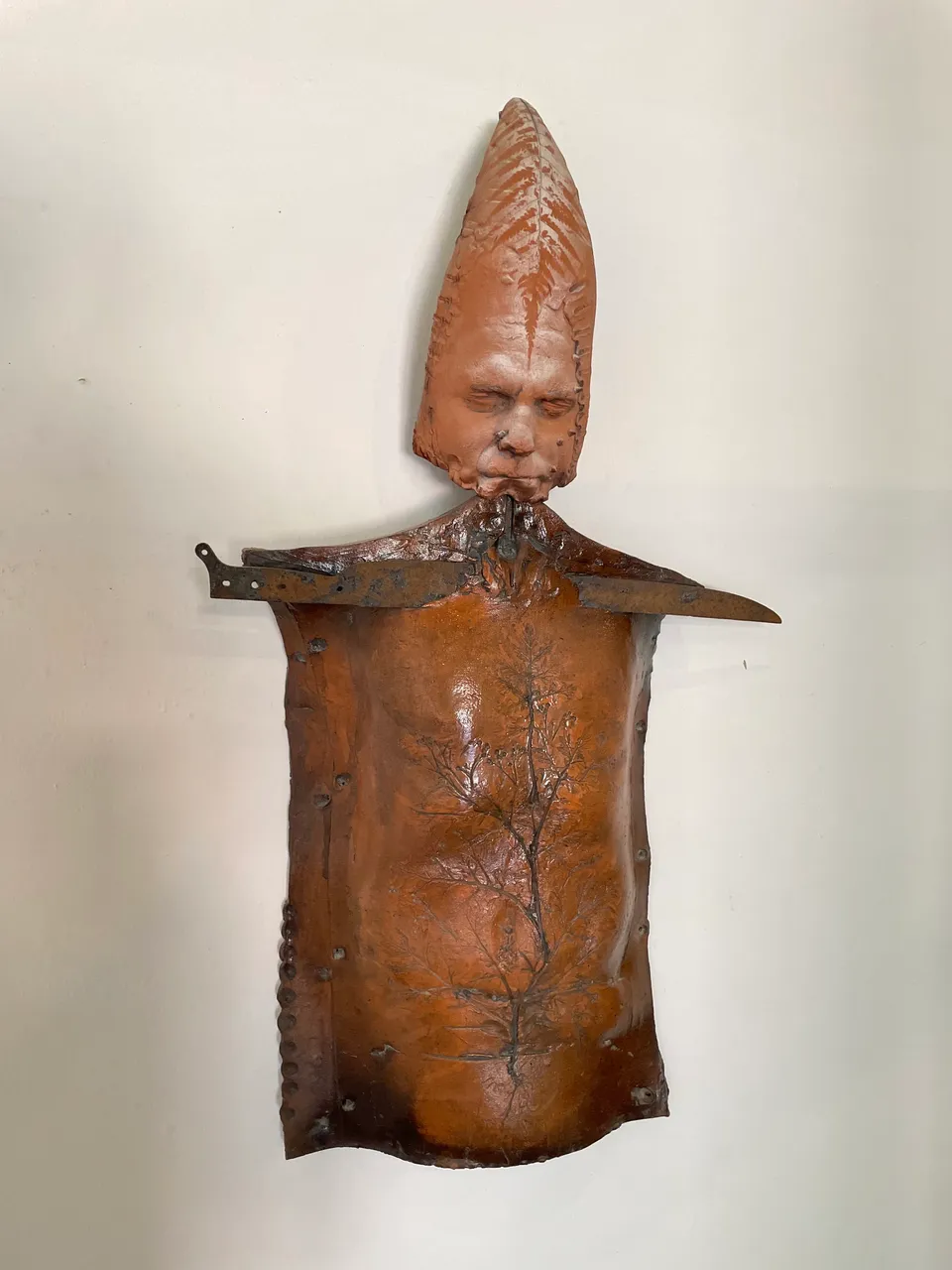
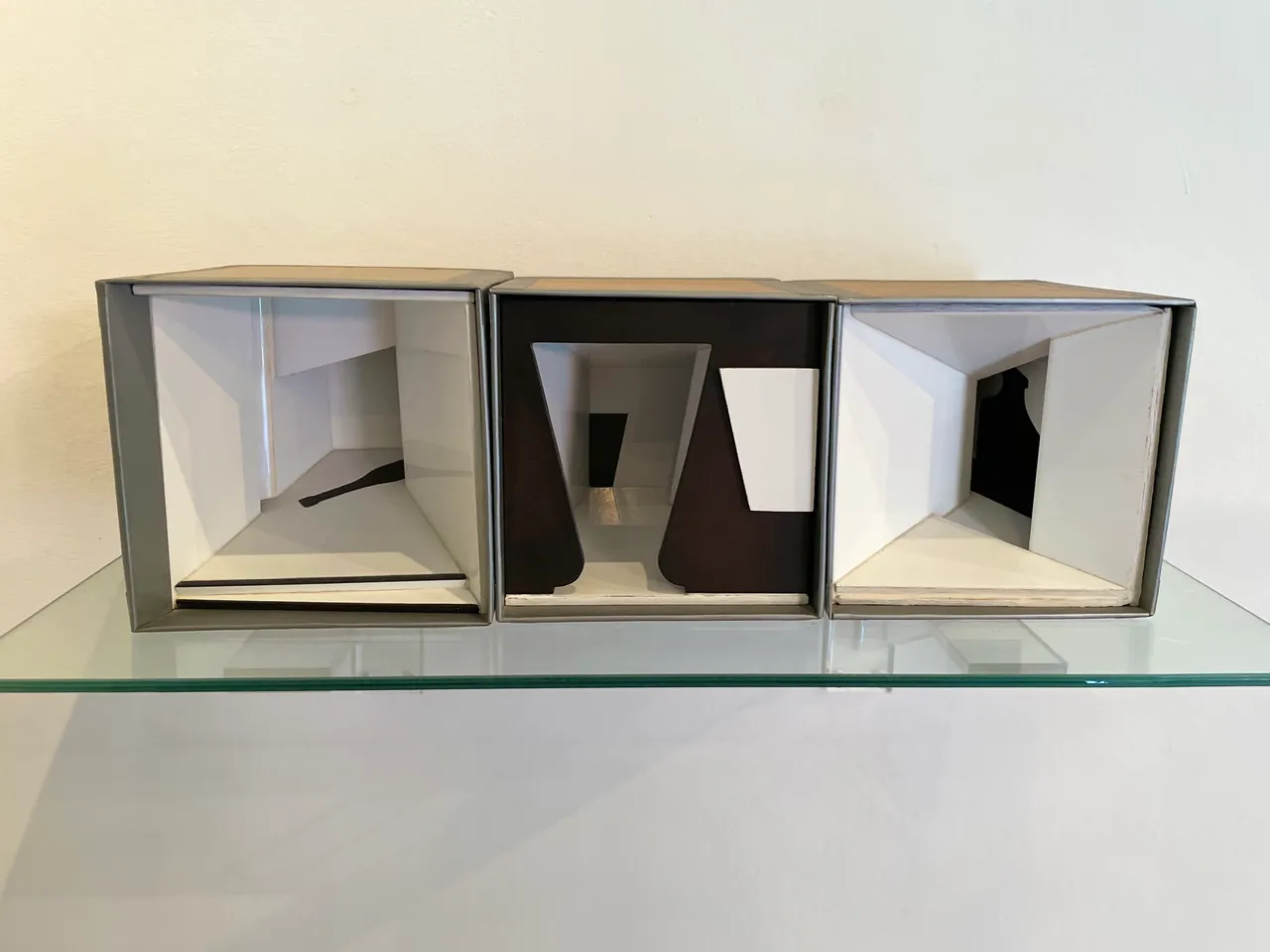
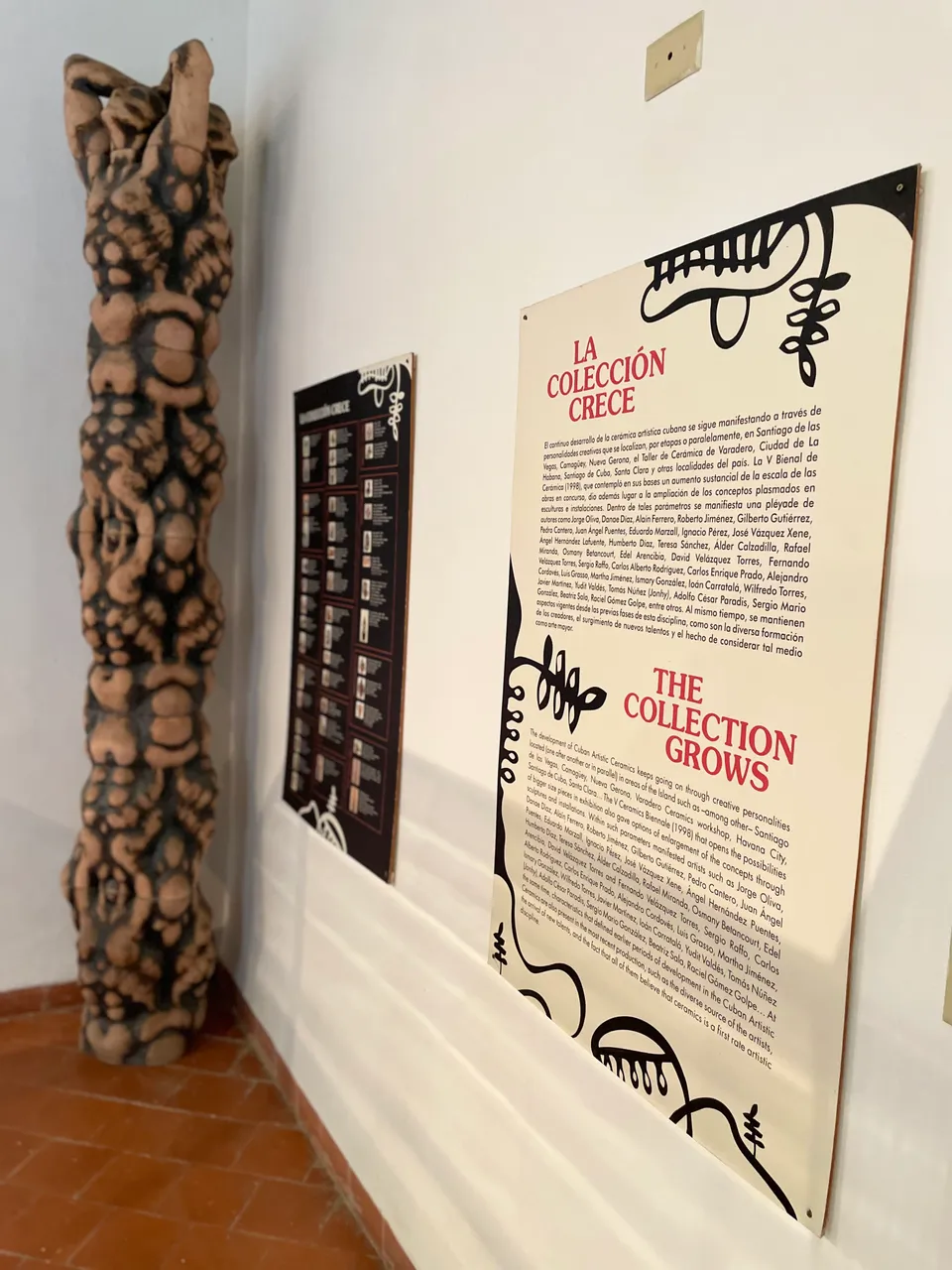
Se exhibe la colección principal del primer período, la creación de Amelia Peláez, Wilfredo Lam que ocupa relevancia en cuanto a cantidad de obras, tanto de valor excepcional como otras que responden a diversos criterios museológicos. Los murales y losas de René Portocarrero, Alfredo Sosabravo también son representativos desde el punto de vista plástico y temático. De igual manera sucede con los demás exponentes que conforman la sala expositiva permanente denominada Iniciadores.
The main collection of the first period is exhibited, the creation of Amelia Peláez, Wilfredo Lam that occupies relevance in terms of quantity of works, both of exceptional value and others that respond to various museological criteria. The murals and slabs of René Portocarrero, Alfredo Sosabravo are also representative from the plastic and thematic point of view. The same is true of the other exponents that make up the permanent exhibition hall called Initiators.
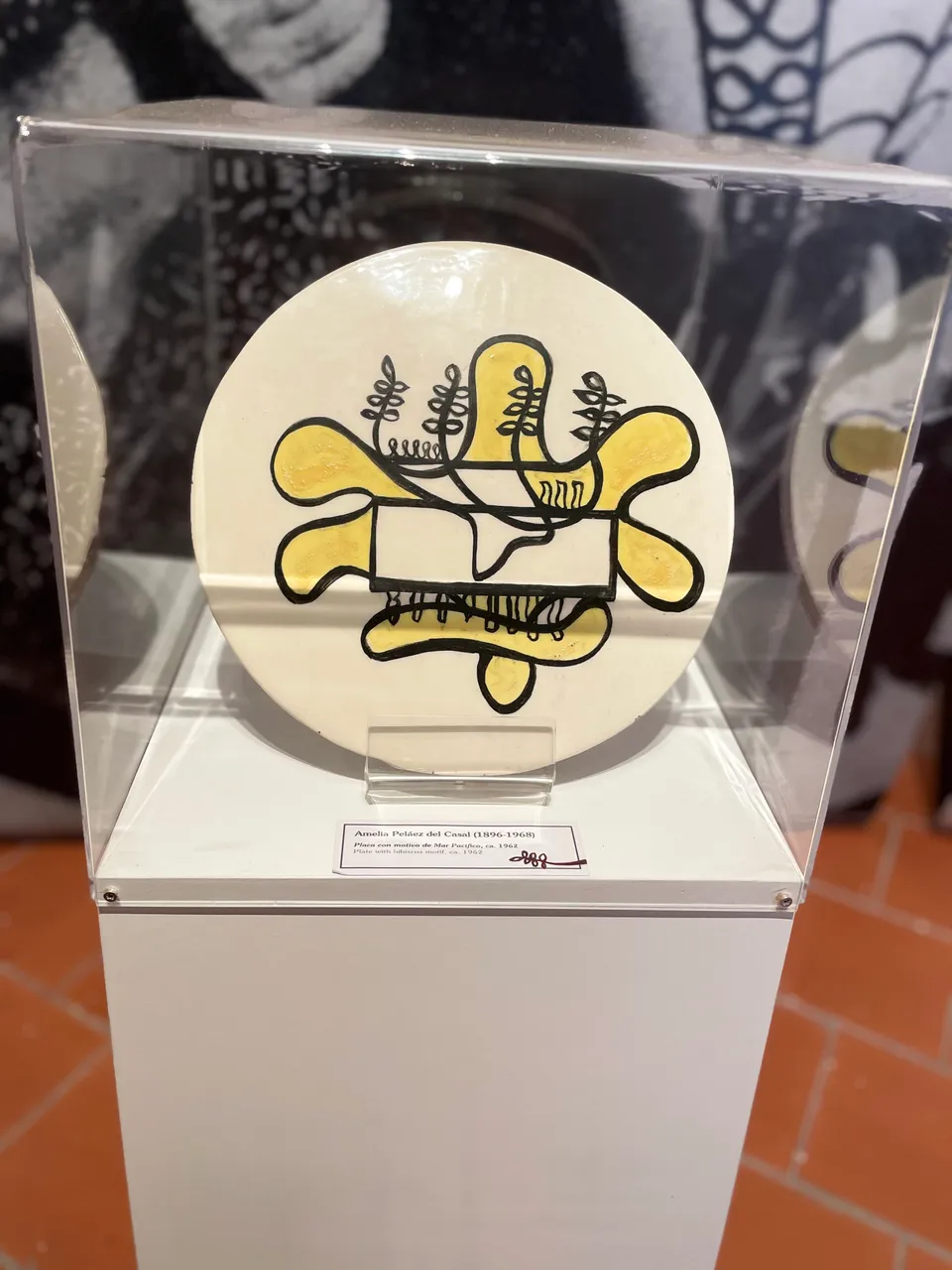
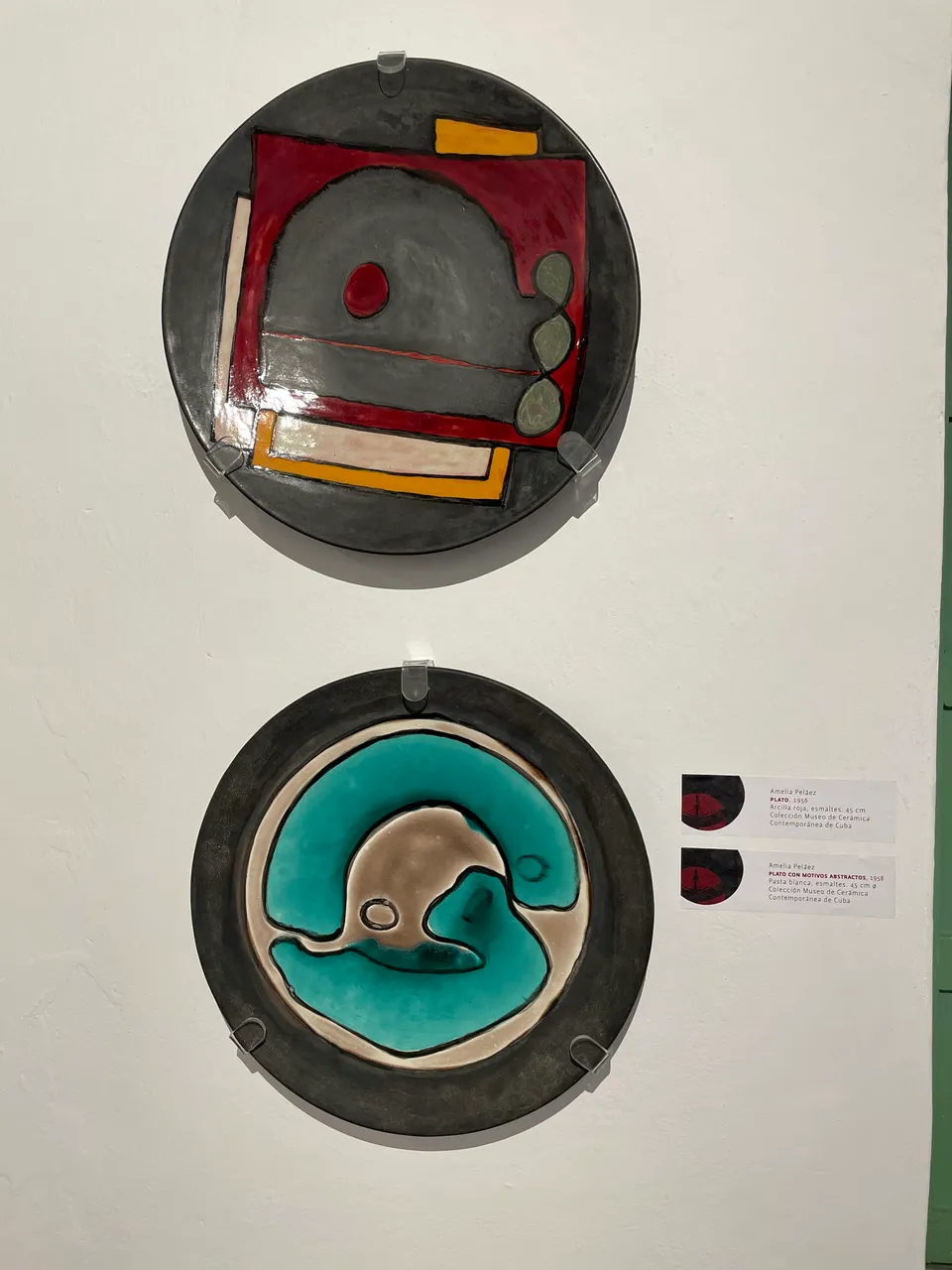
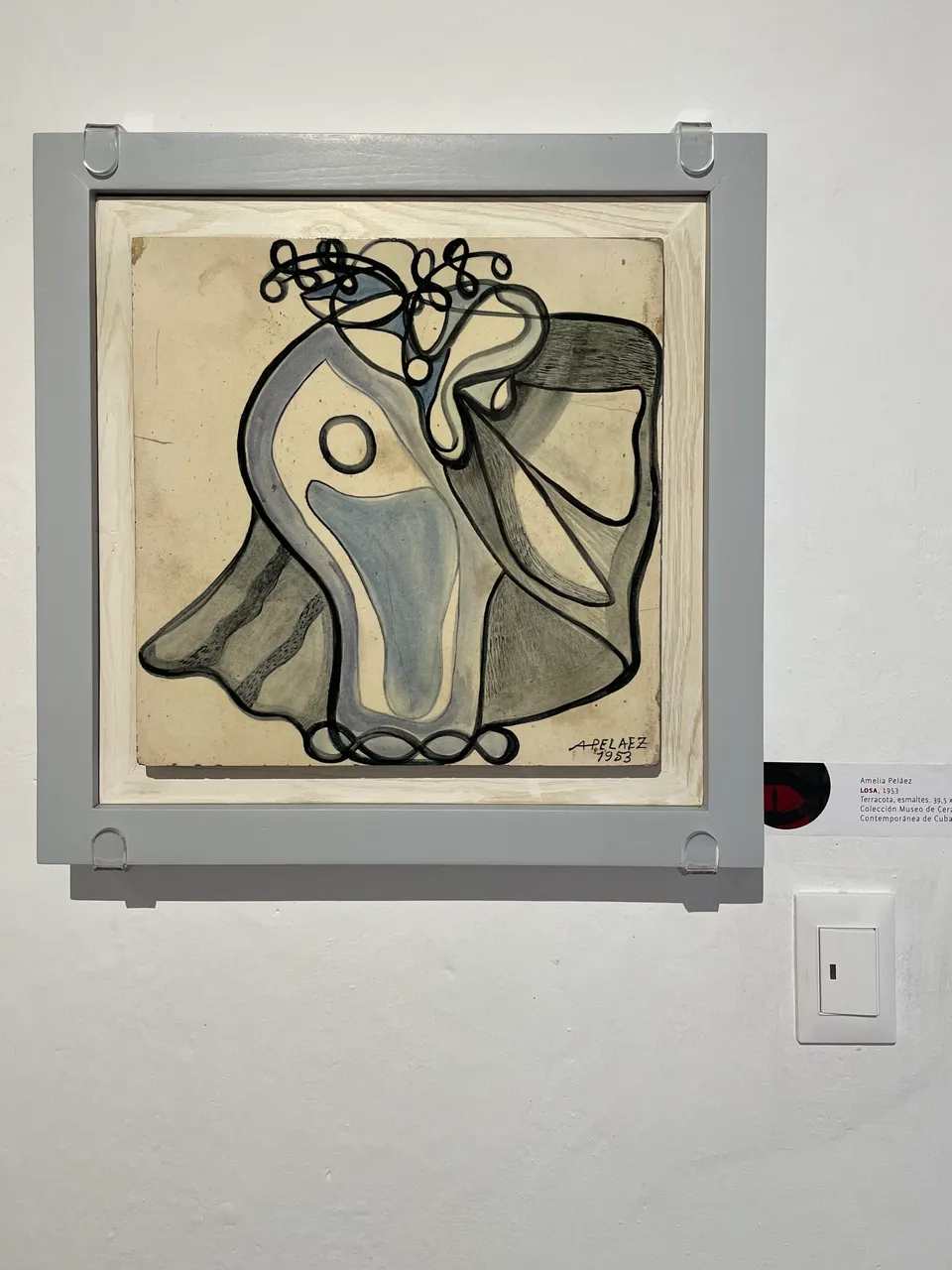
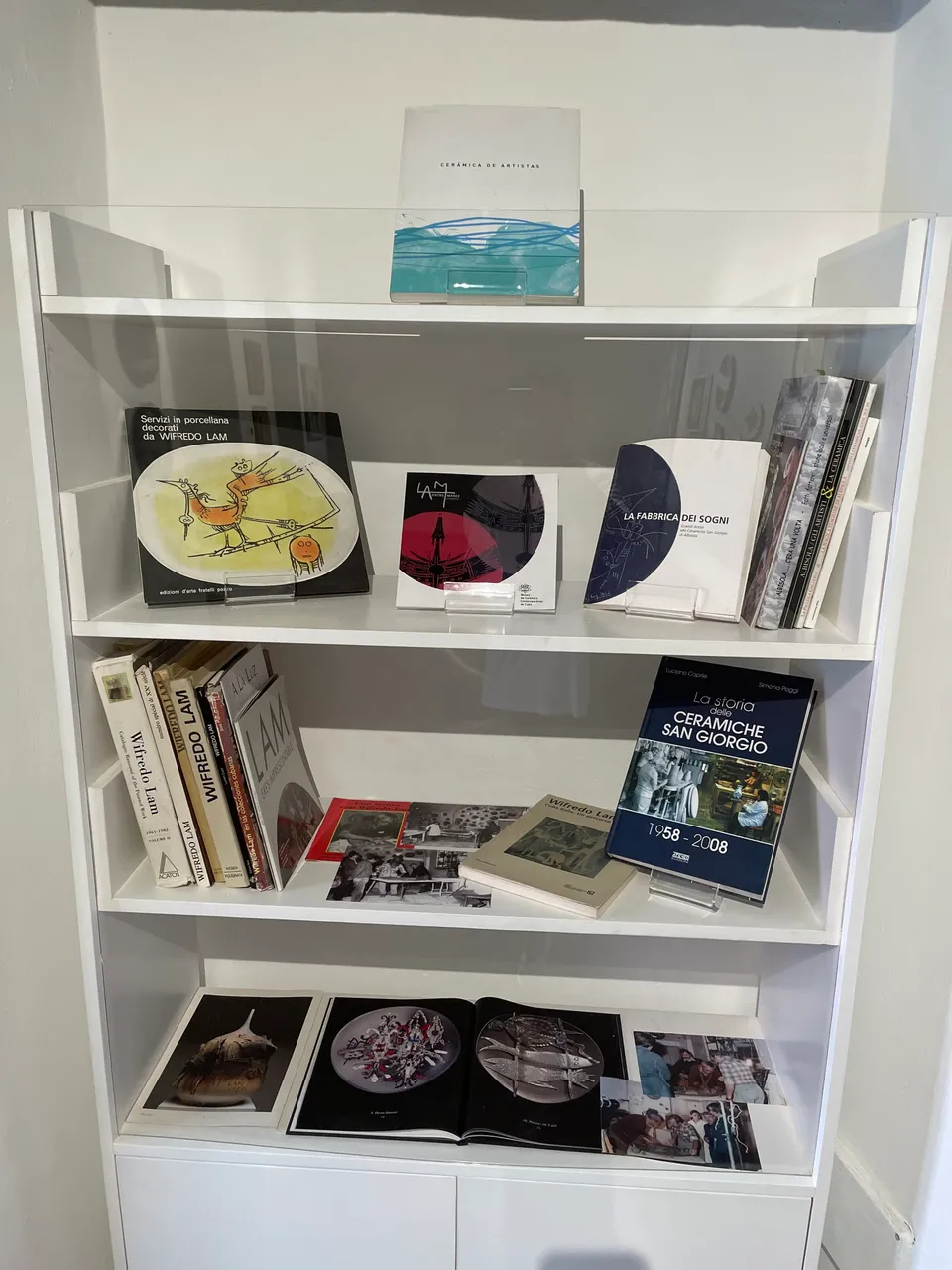
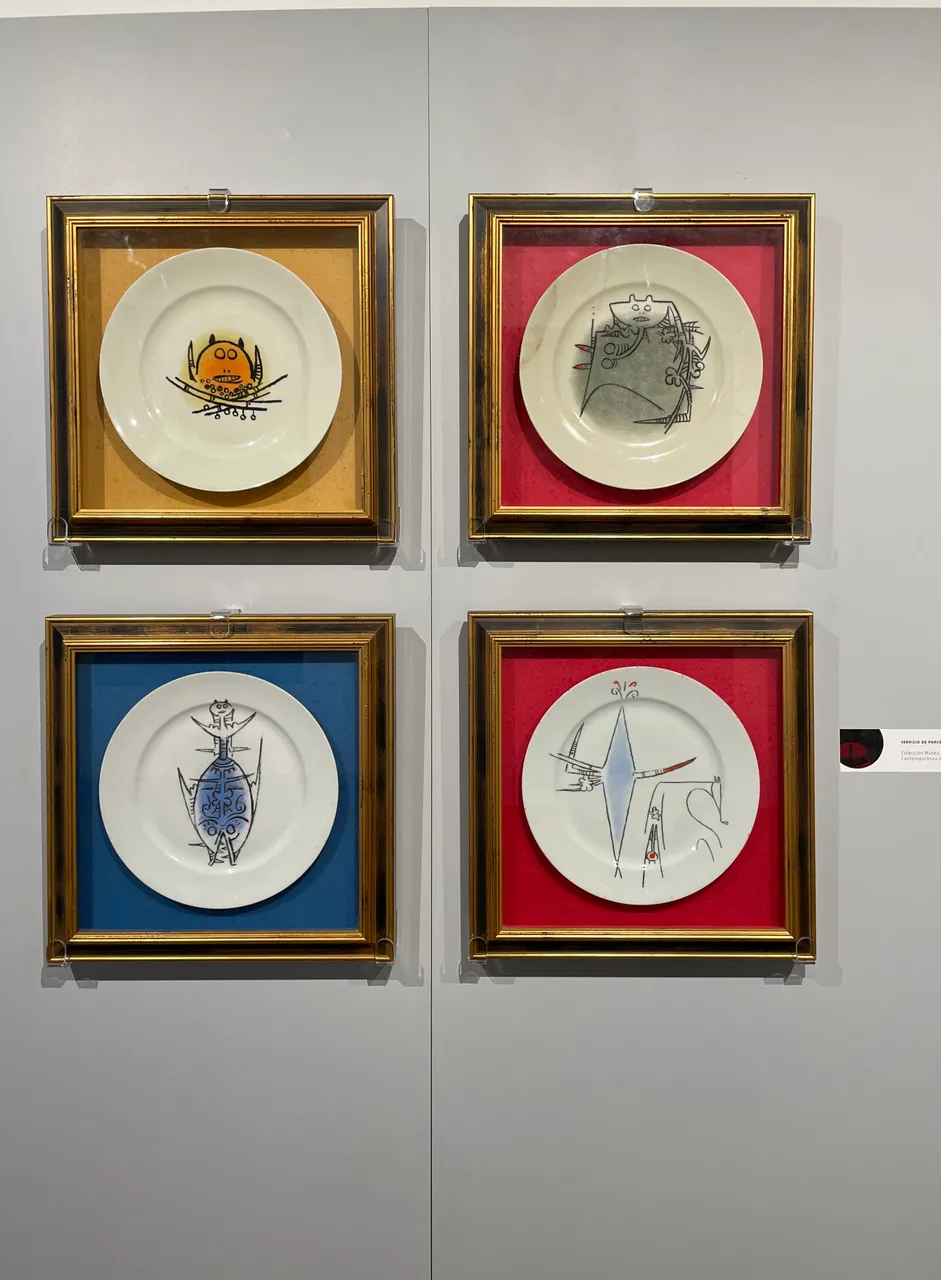
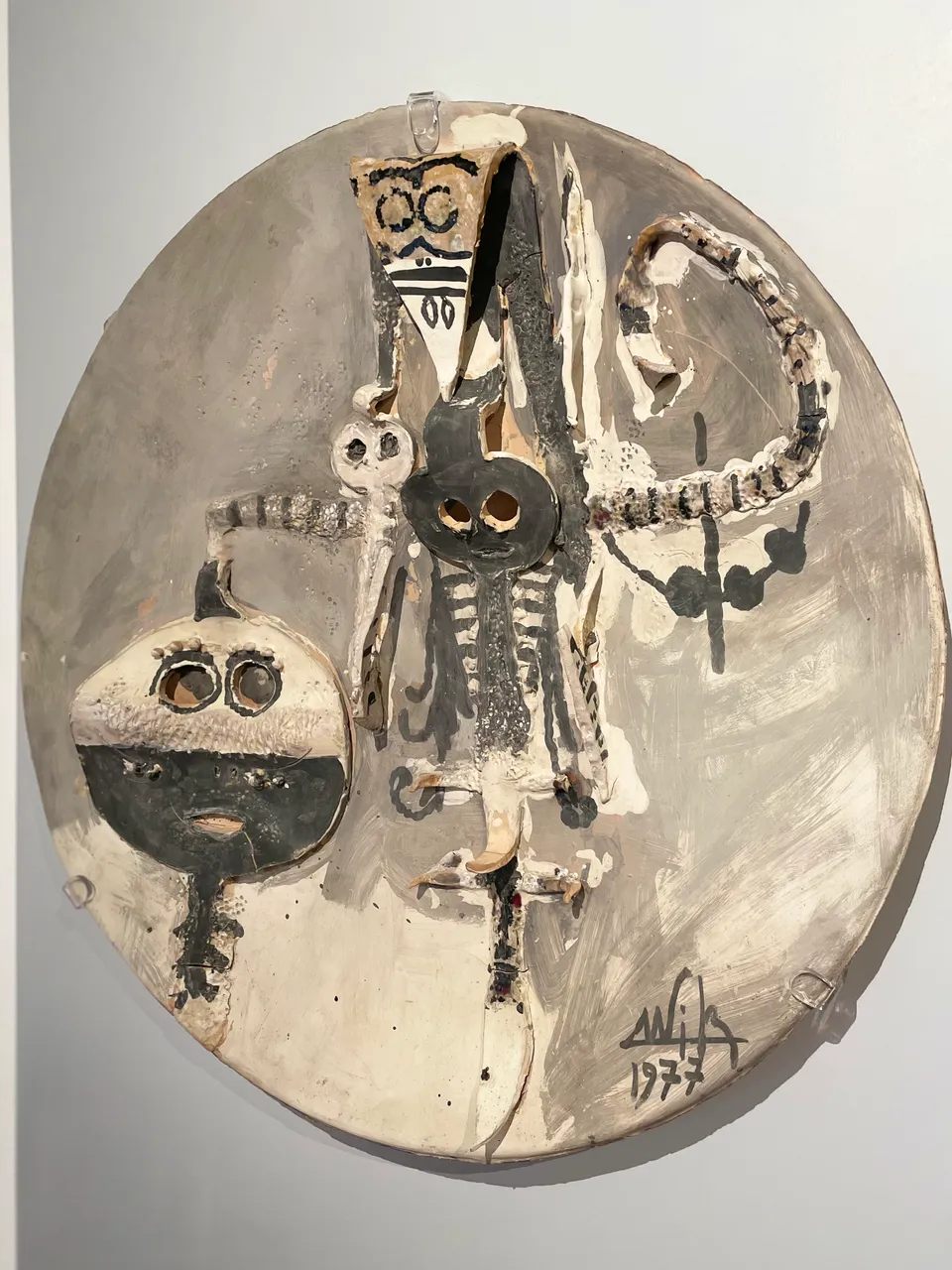

ILIANA GUTIÉRREZ
(La Habana, 1933)
Forma infinita, 1987
Azulejo industrial, esmaltes ( Industrial tile, glazes )
65,5 x 87 cm

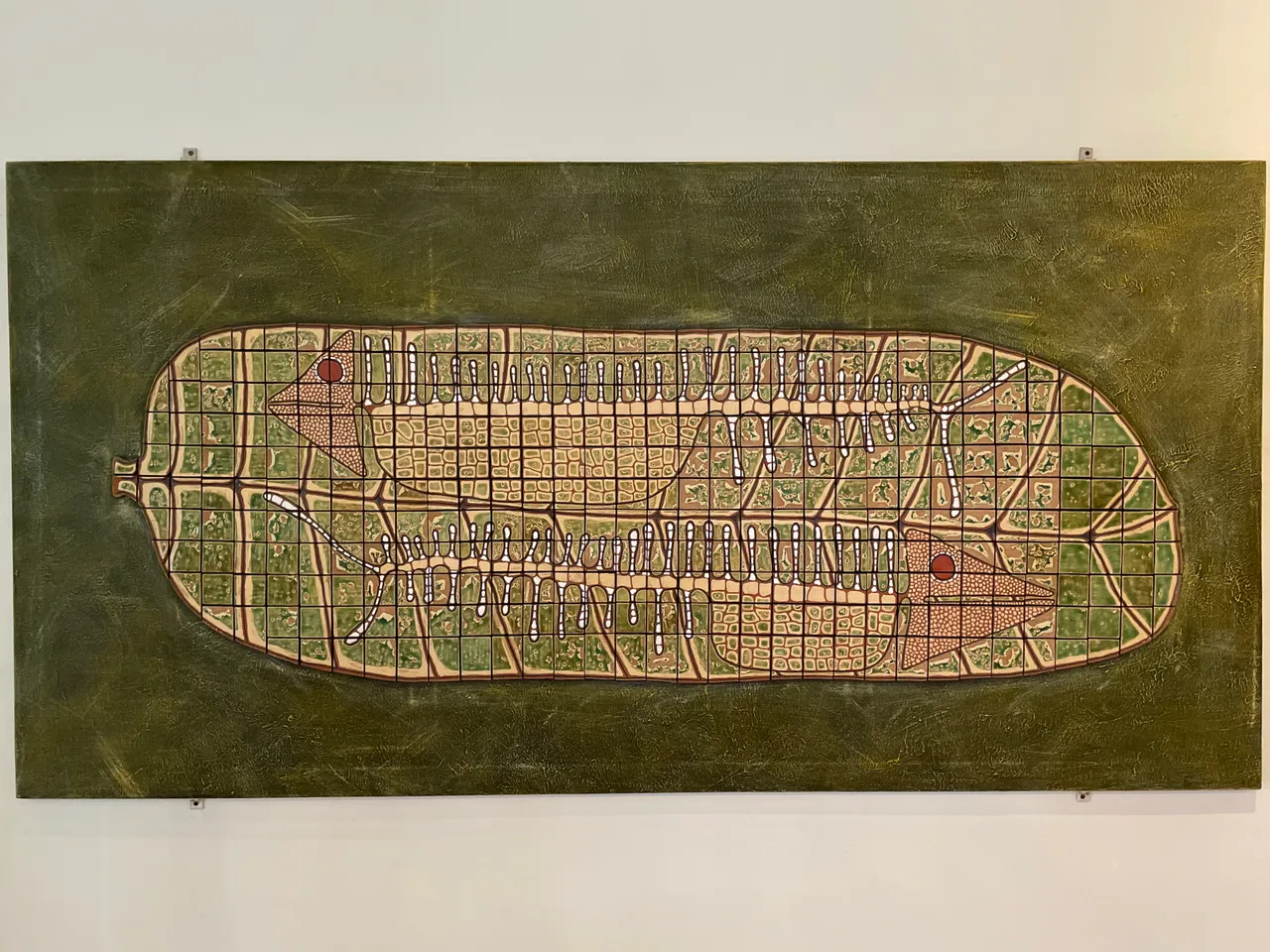
ALFREDO SOSABRAVO
(Villa Clara, 1930)
Pez, 1966
Arcilla roja, esmaltes, ensamblaje ( Red clay, glazes, assemblage )
68 × 77,5 cm
Utiliza la técnica de yuxtaposición de pequeños fragmentos para lograr un panel de considerables dimensiones.
He uses the technique of juxtaposition of small fragments to achieve a panel of considerable dimensions.
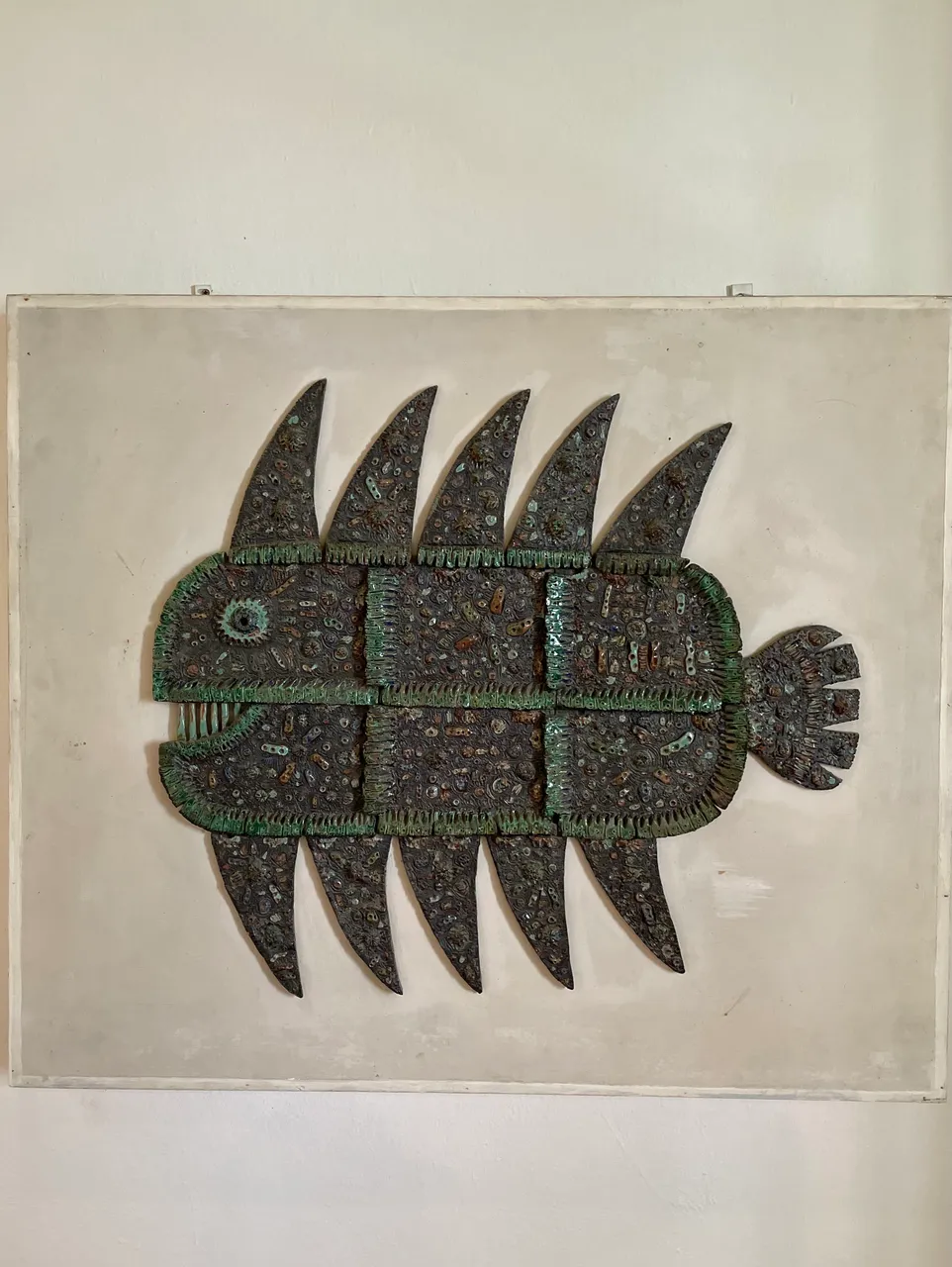
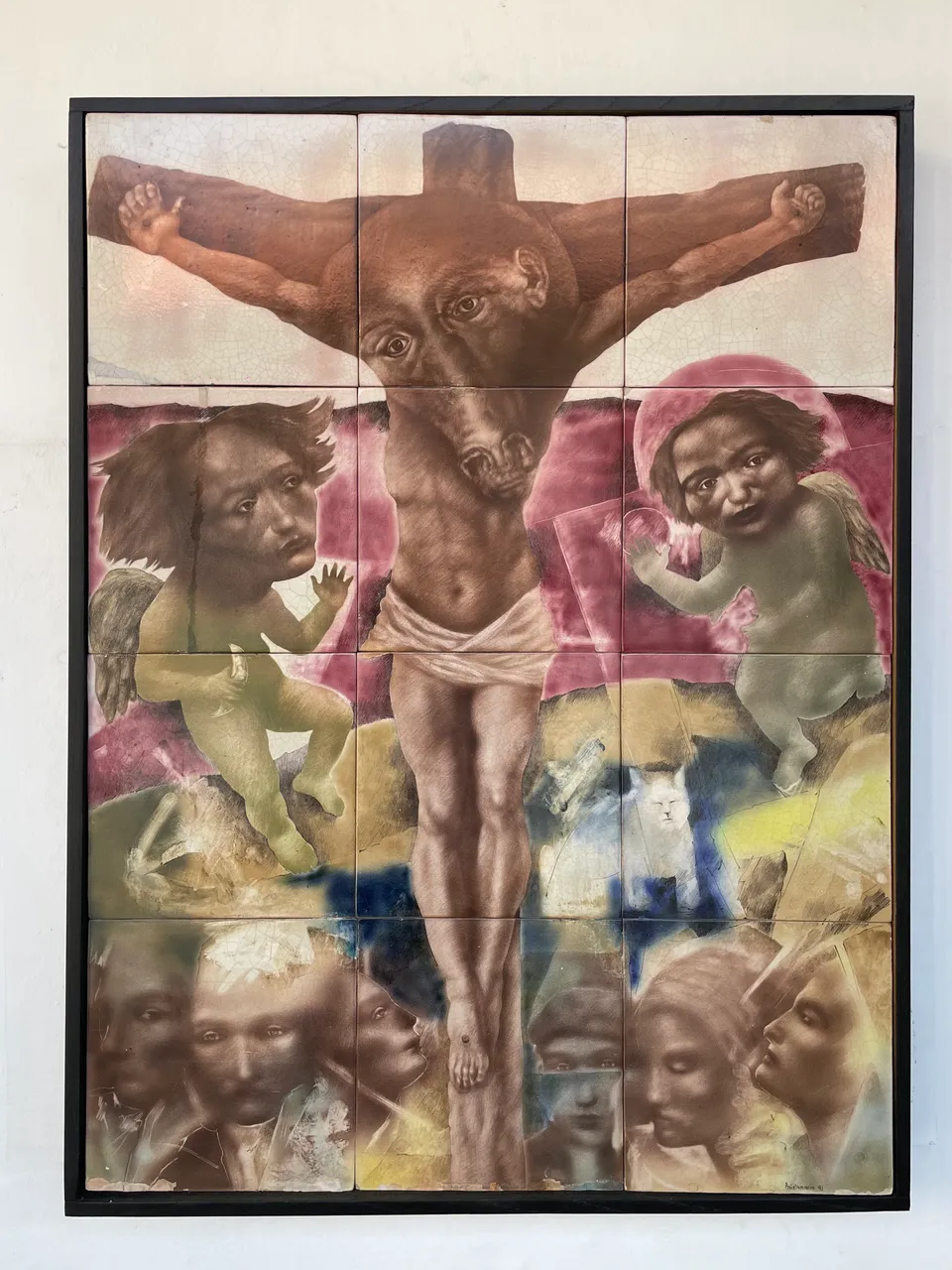
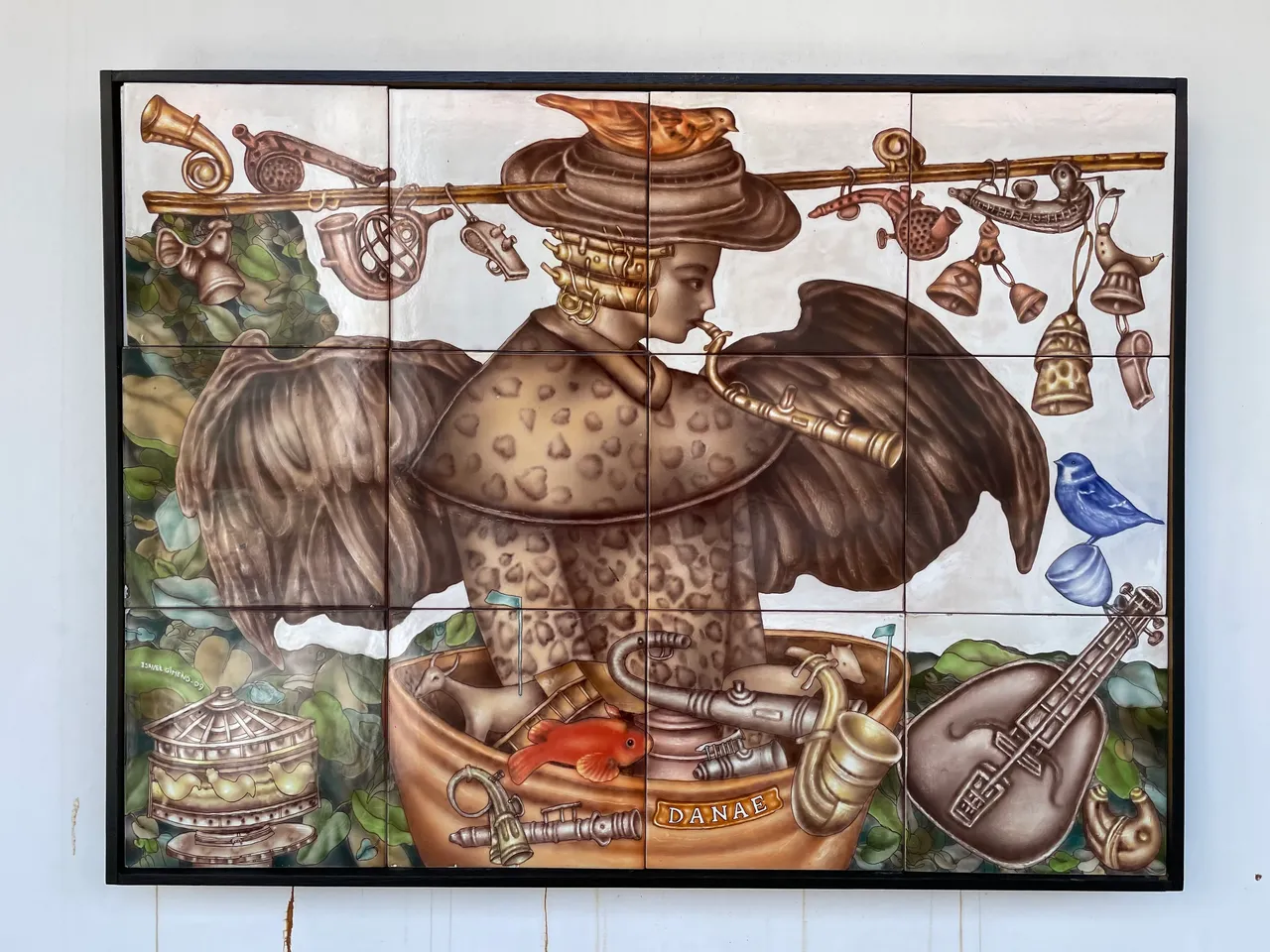
El Museo no ha cesado en su empeño museológico-museográfico, de divulgación, conservación y proyección teórica. La colección de cerámica artística, única de su tipo en Cuba, ha ido ascendiendo, ininterrumpidamente desde su génesis. Es, sin dudas, la institución un escenario expositivo imprescindible, a la vez que estímulo necesario para el continuo desarrollo de la manifestación.
Por último les presento una escultura que personalmente me encantó y llamó mucho la atención por su imaginación, aquí se las dejo:
Por último les presento una escultura que personalmente me encantó y llamó mucho la atención por su imaginación, aquí se las dejo:
The Museum has not stopped in its museological-museographic, dissemination, conservation and theoretical projection efforts. The collection of artistic ceramics, the only one of its kind in Cuba, has been growing uninterruptedly since its genesis. Undoubtedly, the institution is an essential exhibition scenario, as well as a necessary stimulus for the continuous development of the manifestation.
Finally, I present a sculpture that I personally loved and called my attention because of its imagination, here it is:

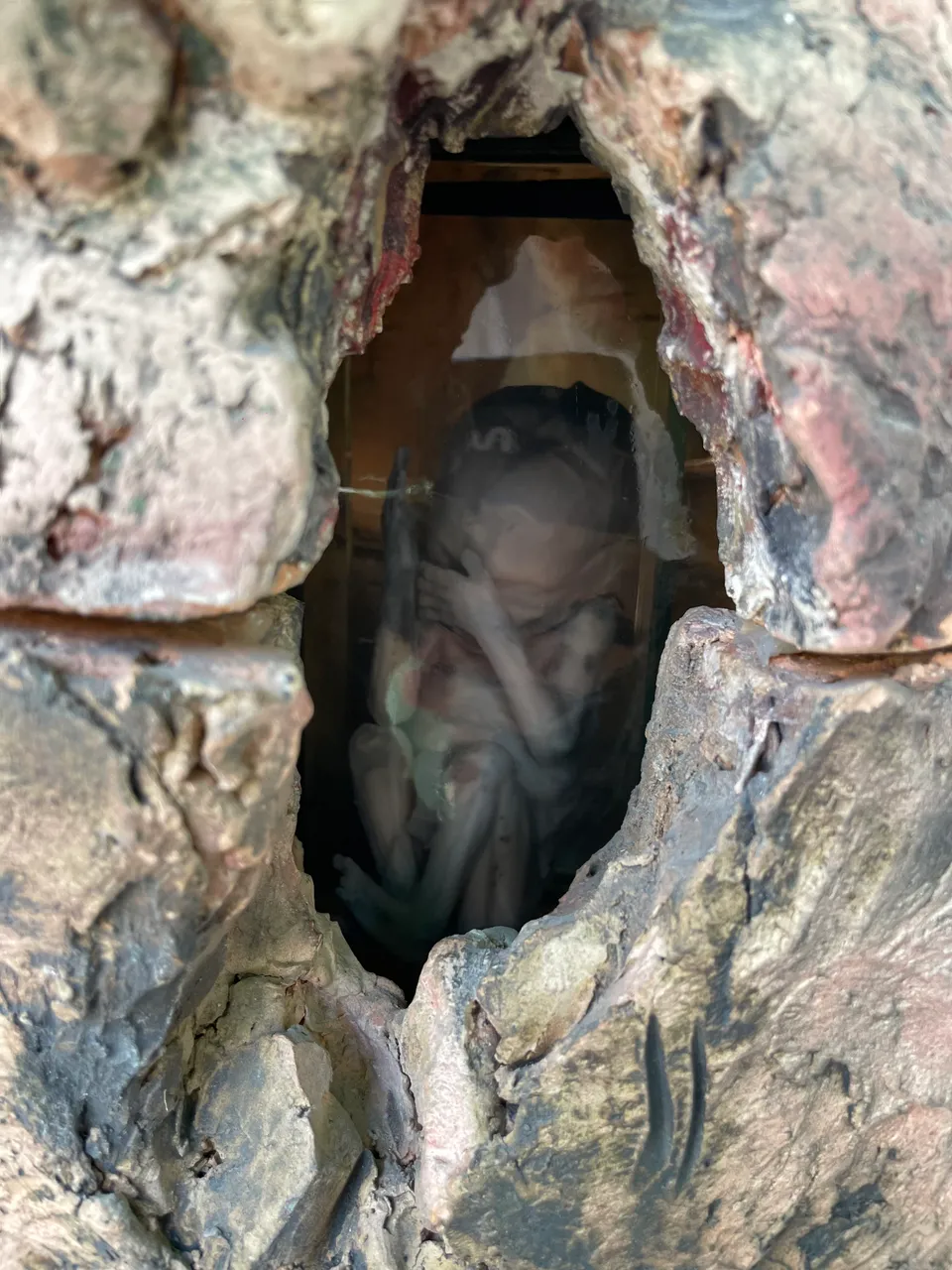
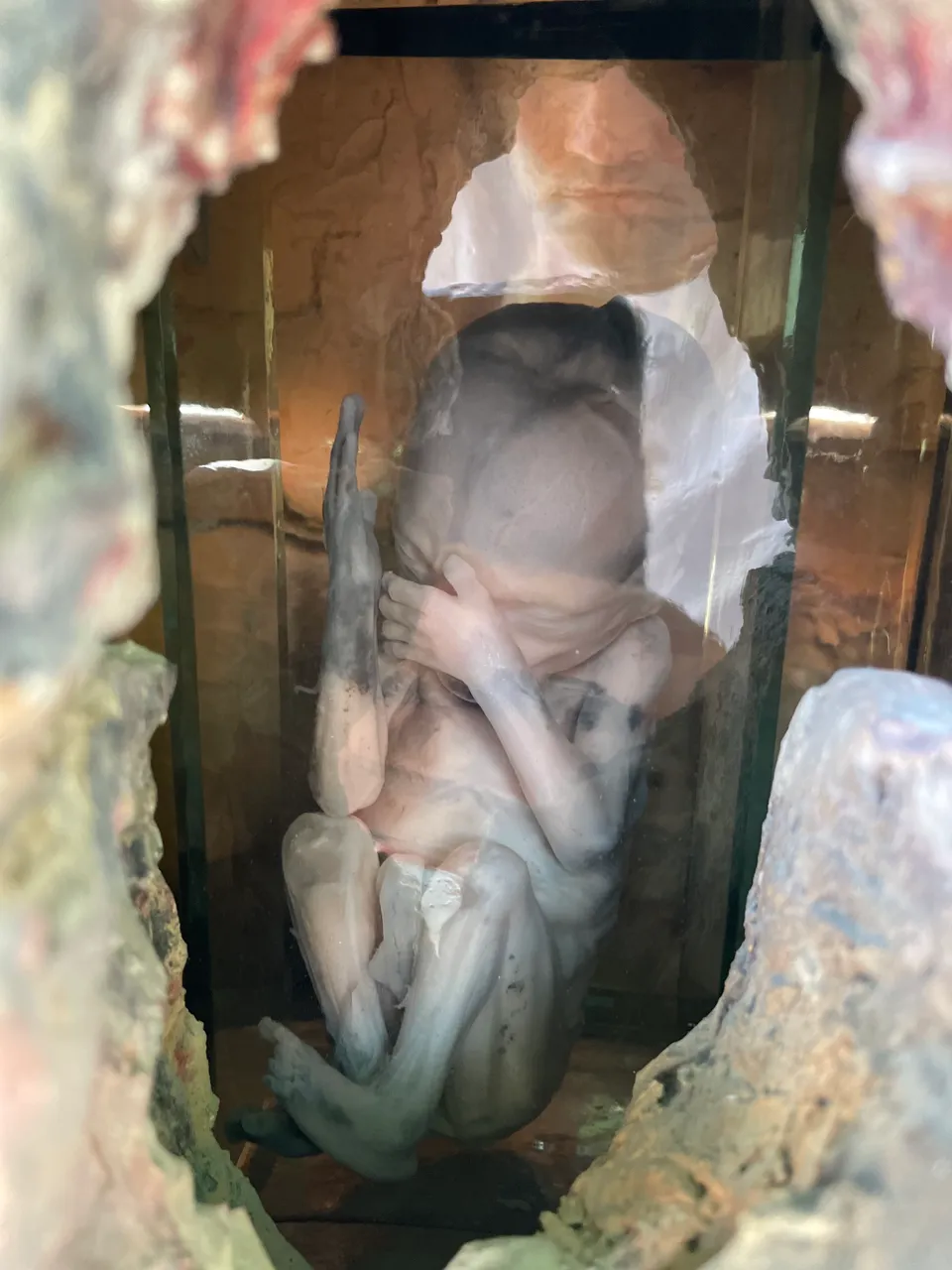
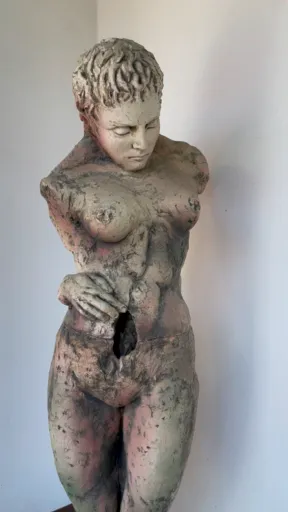
La Casa Aguilera abre sus puertas e invita a los transeúntes comunes, a los sensibles a la cerámica, a los artistas y colaboradores en pos de hacerlos cómplices de lo que exhibe y atesora en el lugar, además de que aprecien cada pieza, sus técnicas artísticas, el brillo de metales preciosos y texturas impredecibles, que hacen de este hogar un lugar de cita obligada para quienes aman lo bueno y lo bello del arte.
Casa Aguilera opens its doors and invites the common passers-by, those sensitive to ceramics, artists and collaborators in order to make them accomplices of what is exhibited and treasured in the place, as well as to appreciate each piece, its artistic techniques, the shine of precious metals and unpredictable textures, which make this home a must-see place for those who love the good and the beautiful of art.
Se encuentra ubicado en Casa Aguilera. Mercaderes No. 27 esq. Amargura, La Habana Vieja, Cuba 🇨🇺
It is located at Casa Aguilera. Mercaderes No. 27 esq. Amargura, La Habana Vieja, Cuba 🇨🇺

Si te ha gustado, no olvides dejar tu comentario y seguirme para próximas publicaciones. Me encantaría saber tu opinión e ideas para el siguiente. Saludos
If you liked it, don't forget to leave a comment and follow me for future posts. I'd love to know your opinion and ideas for the next one. Regards